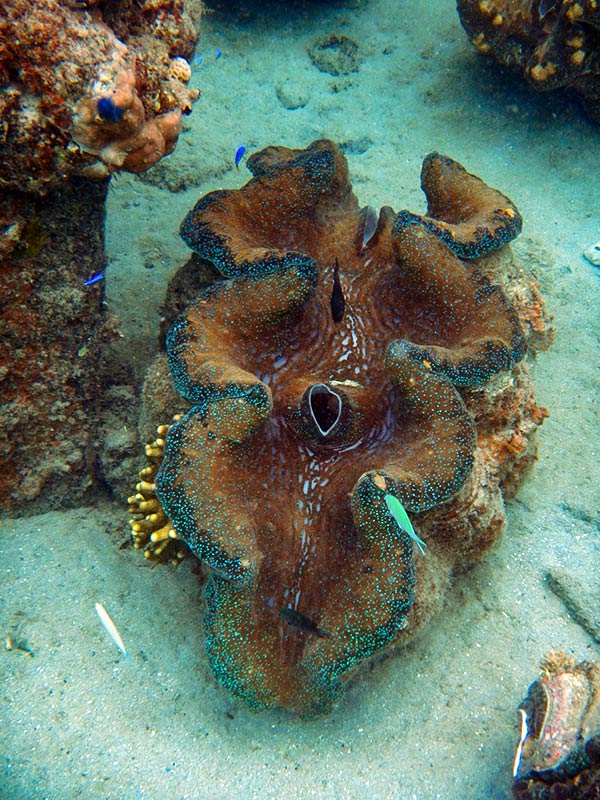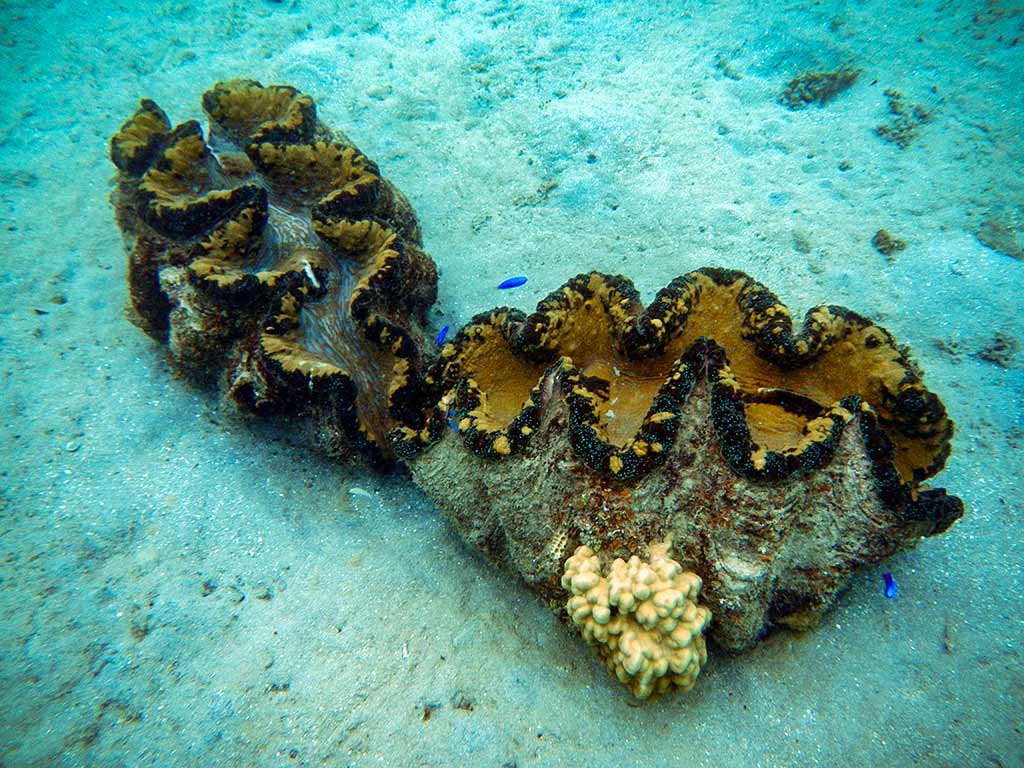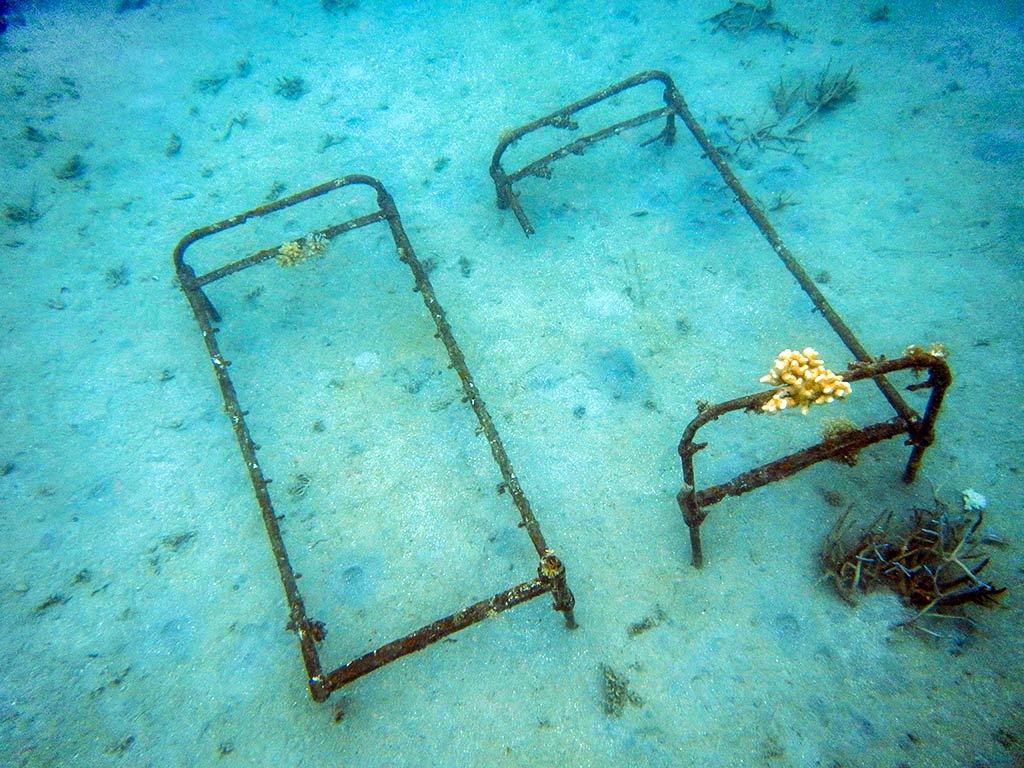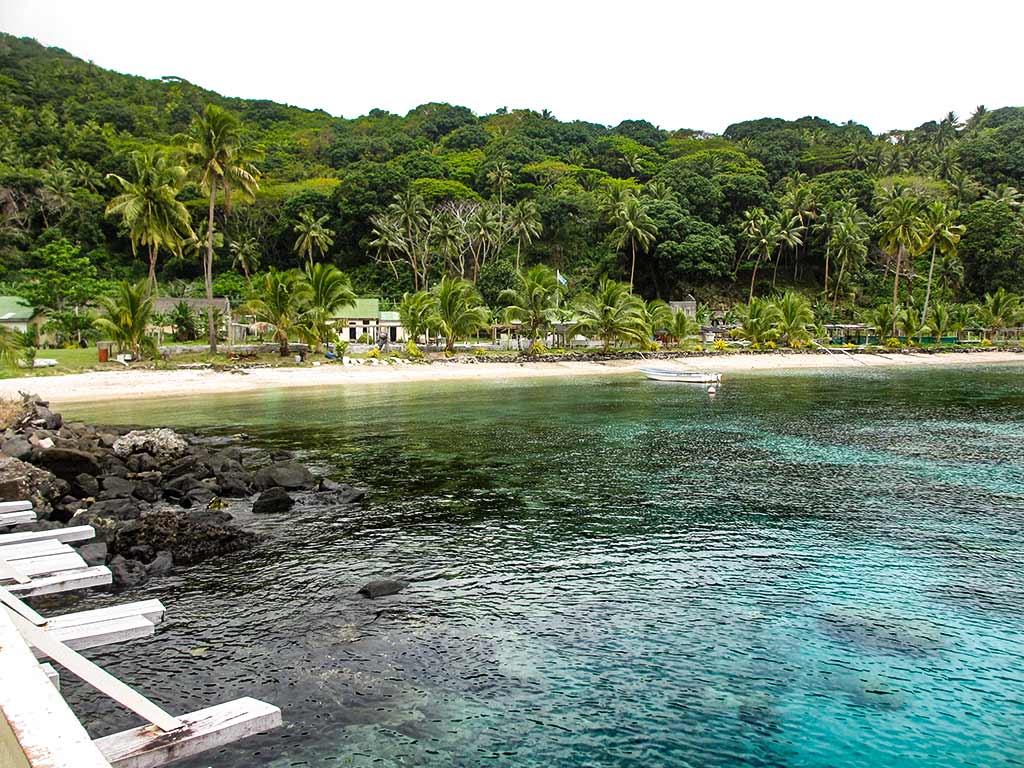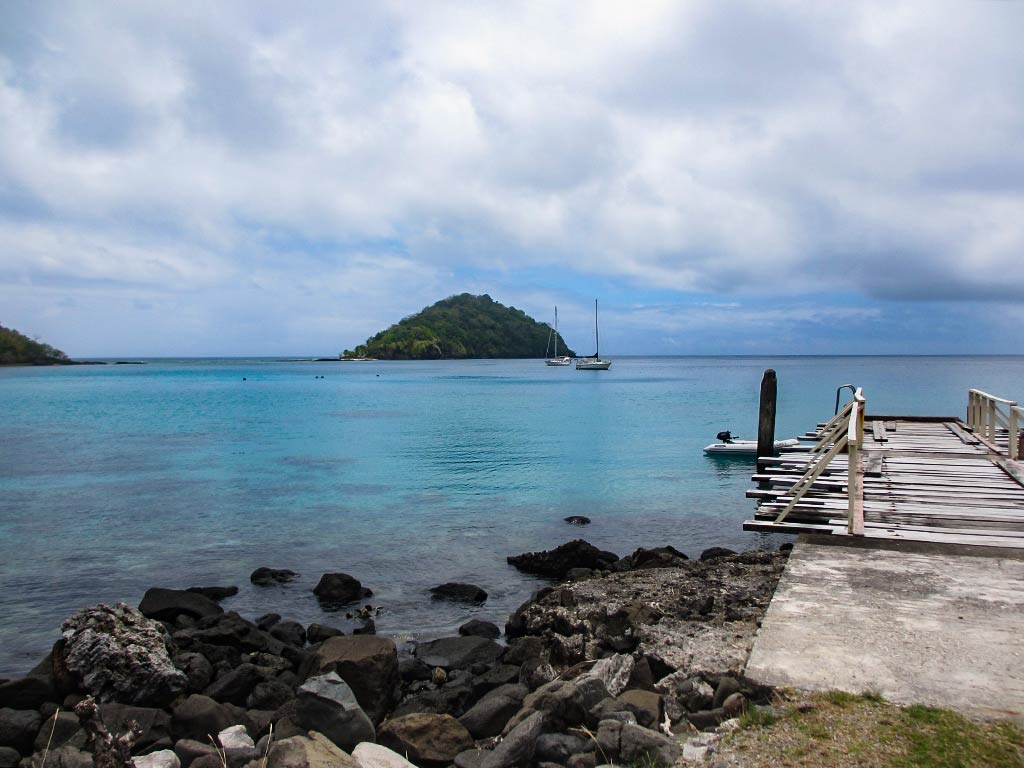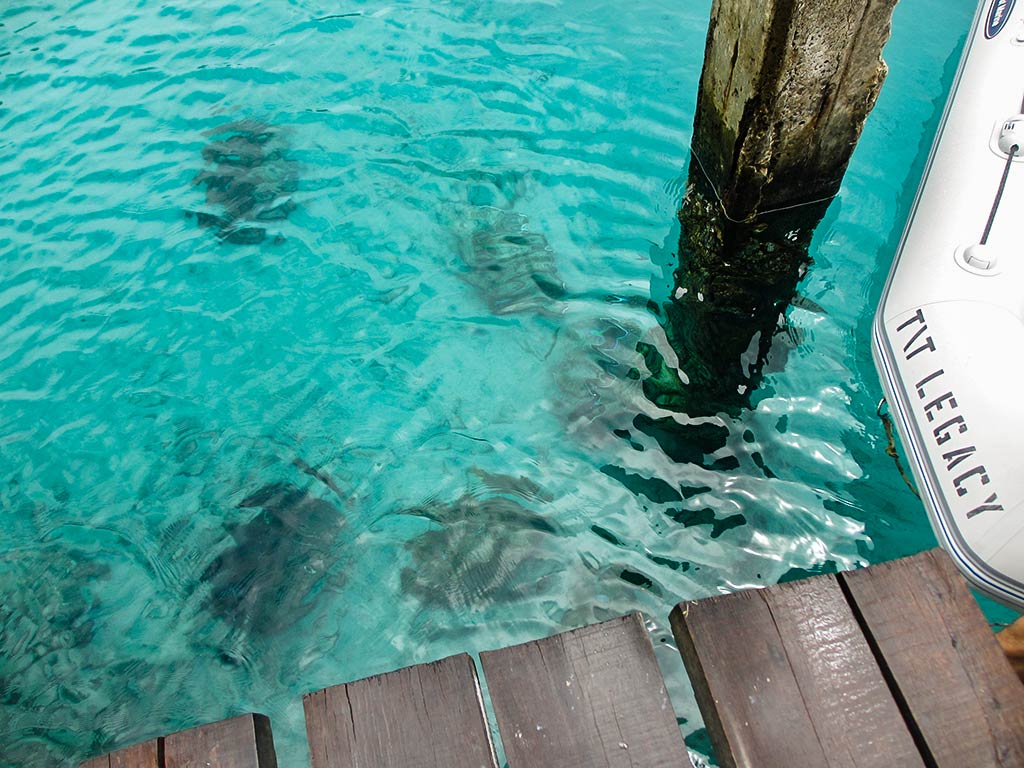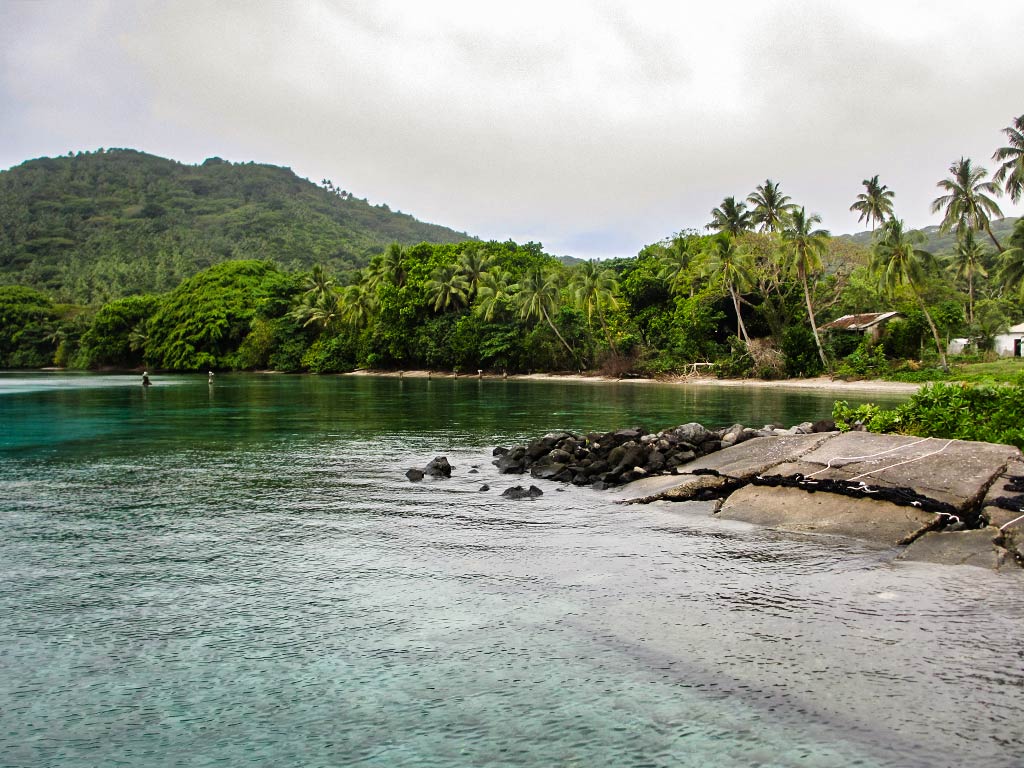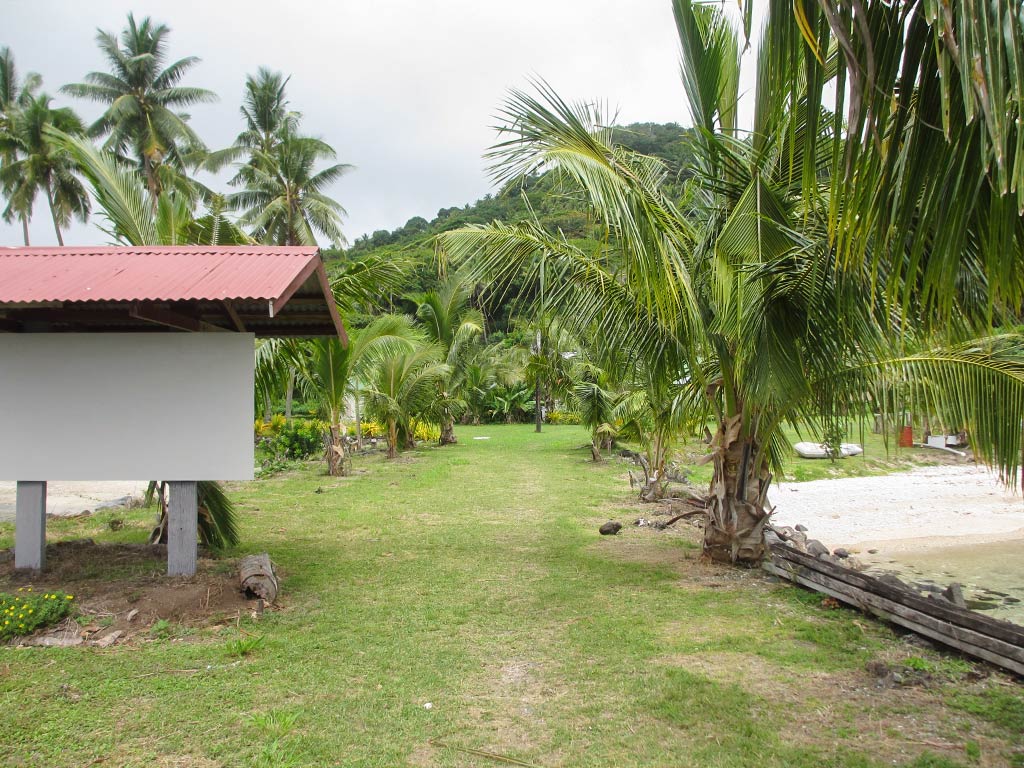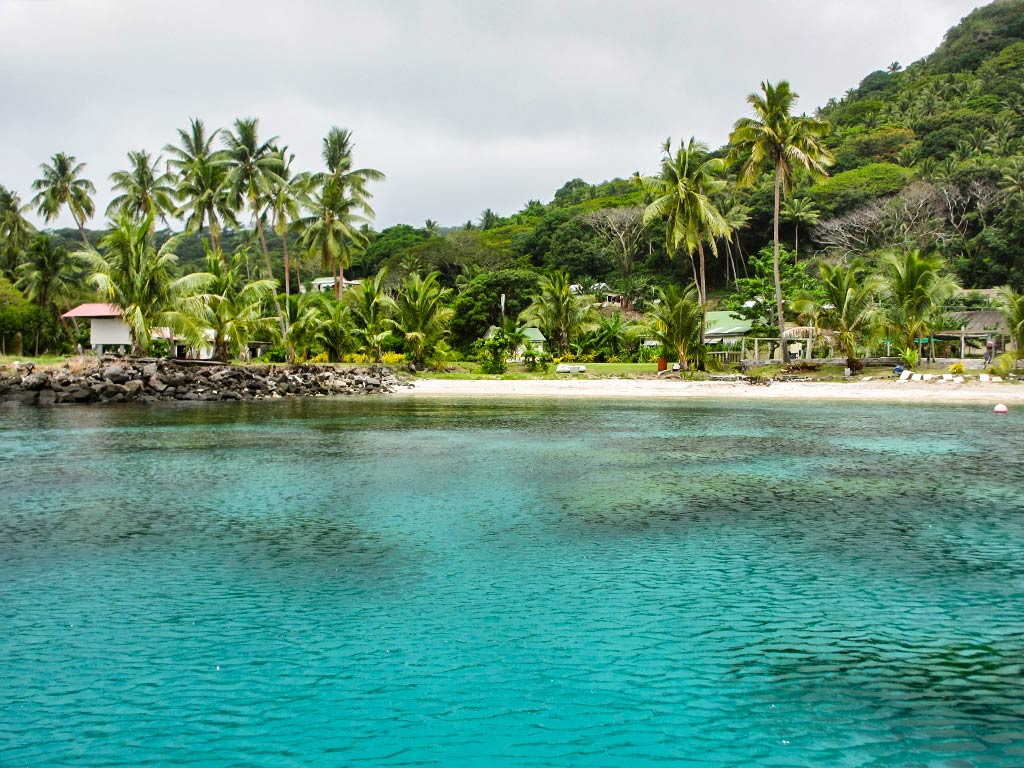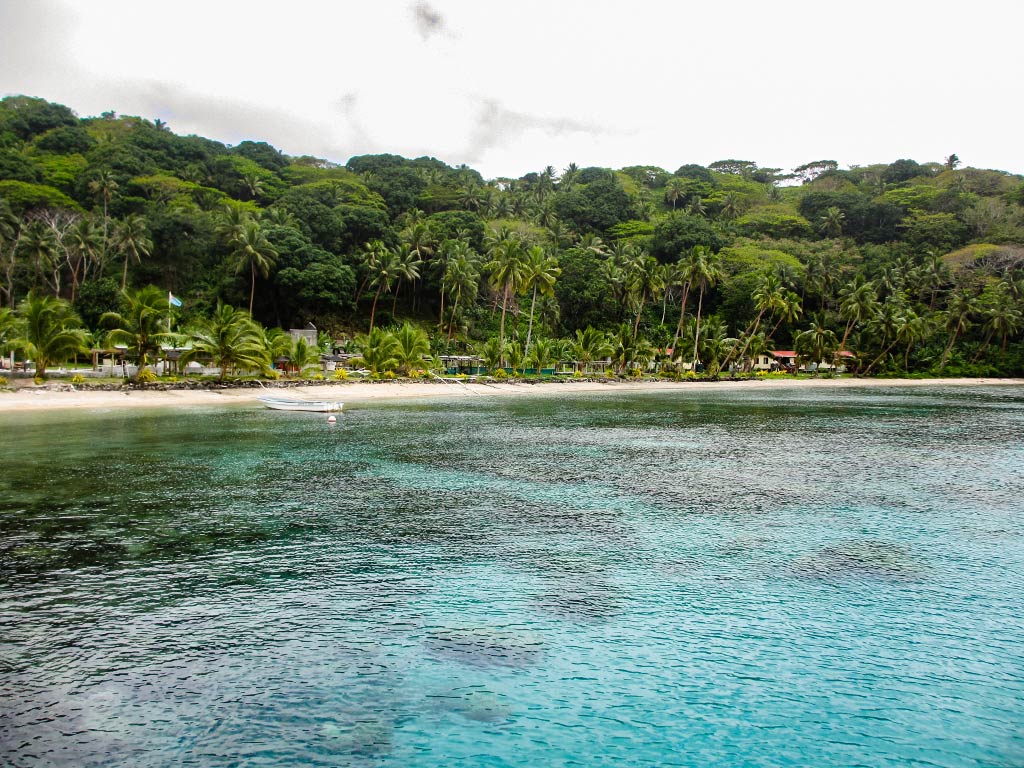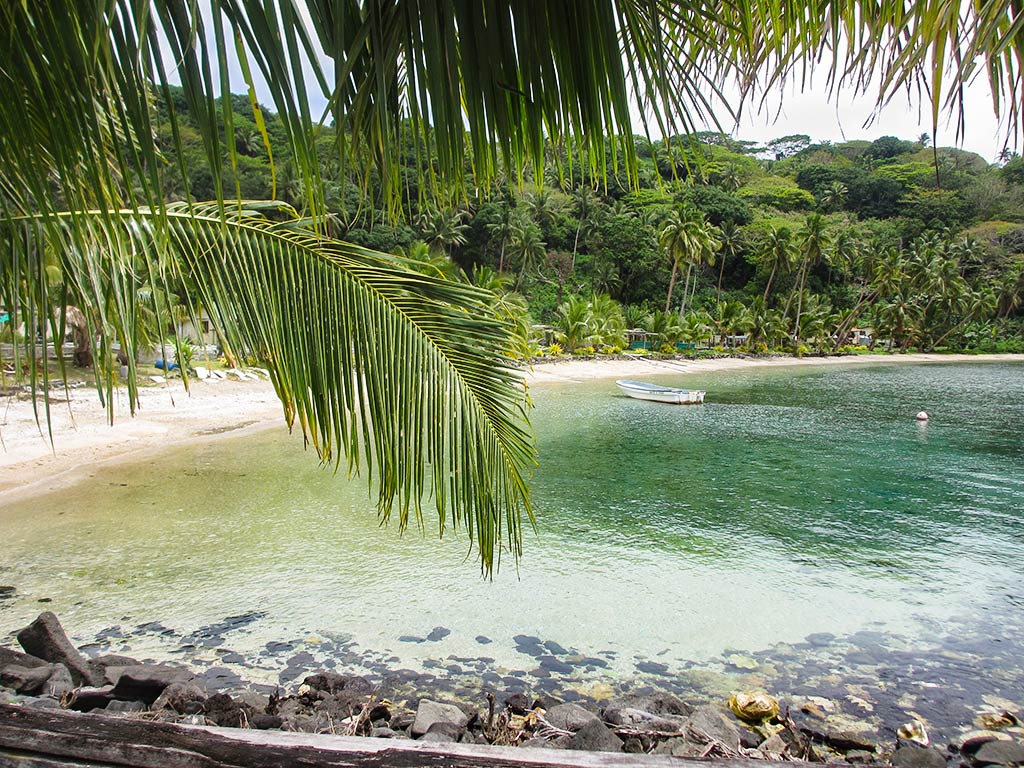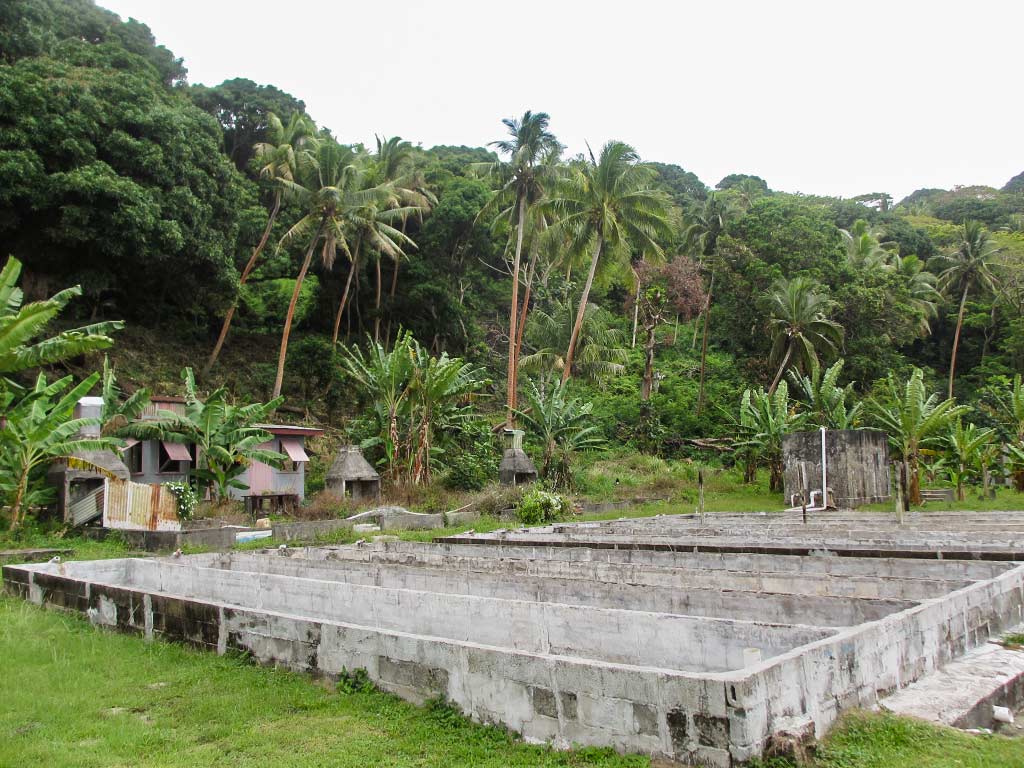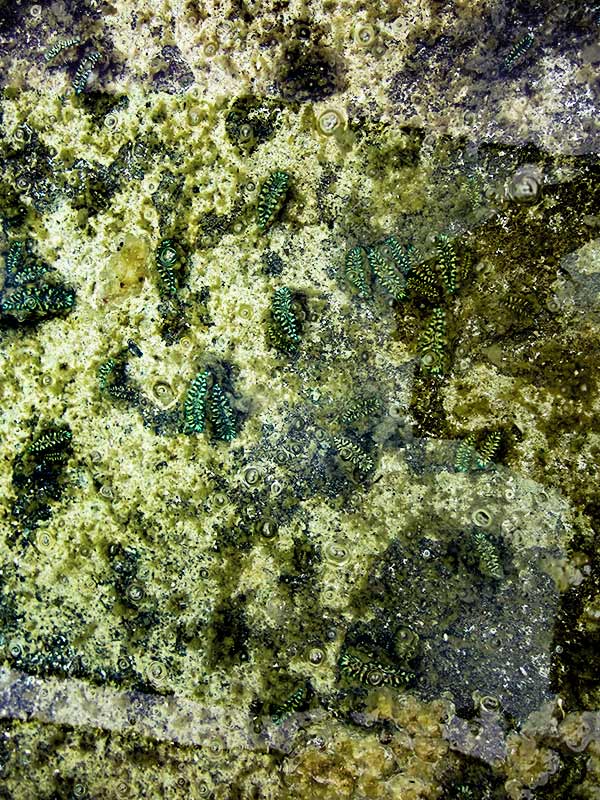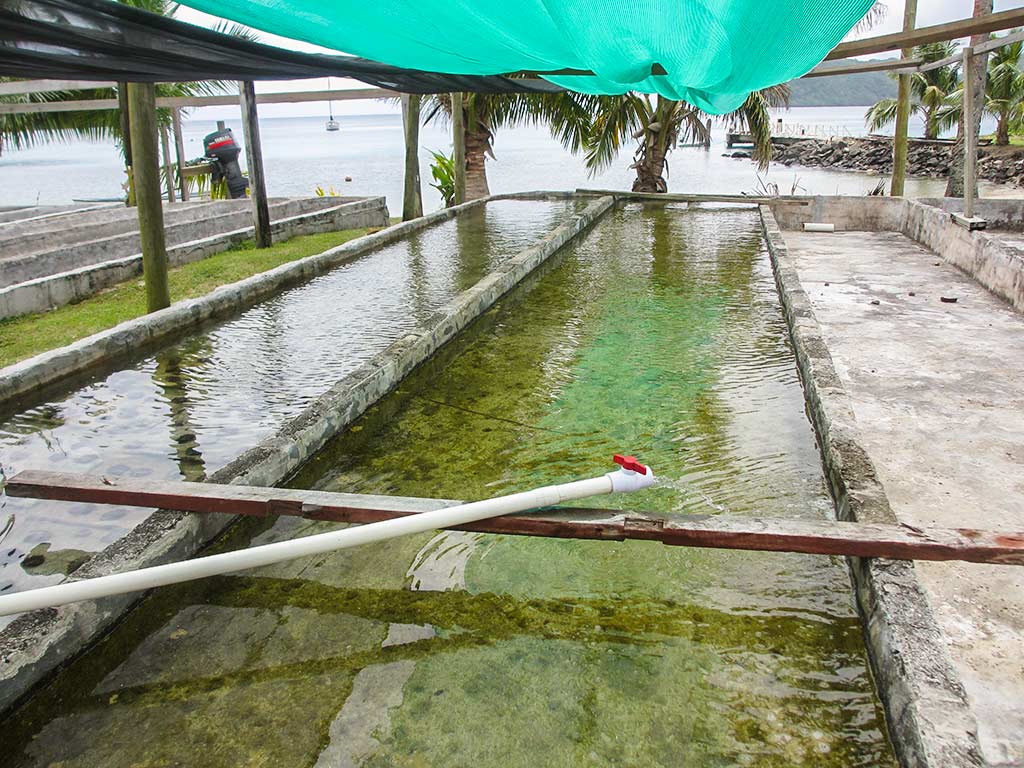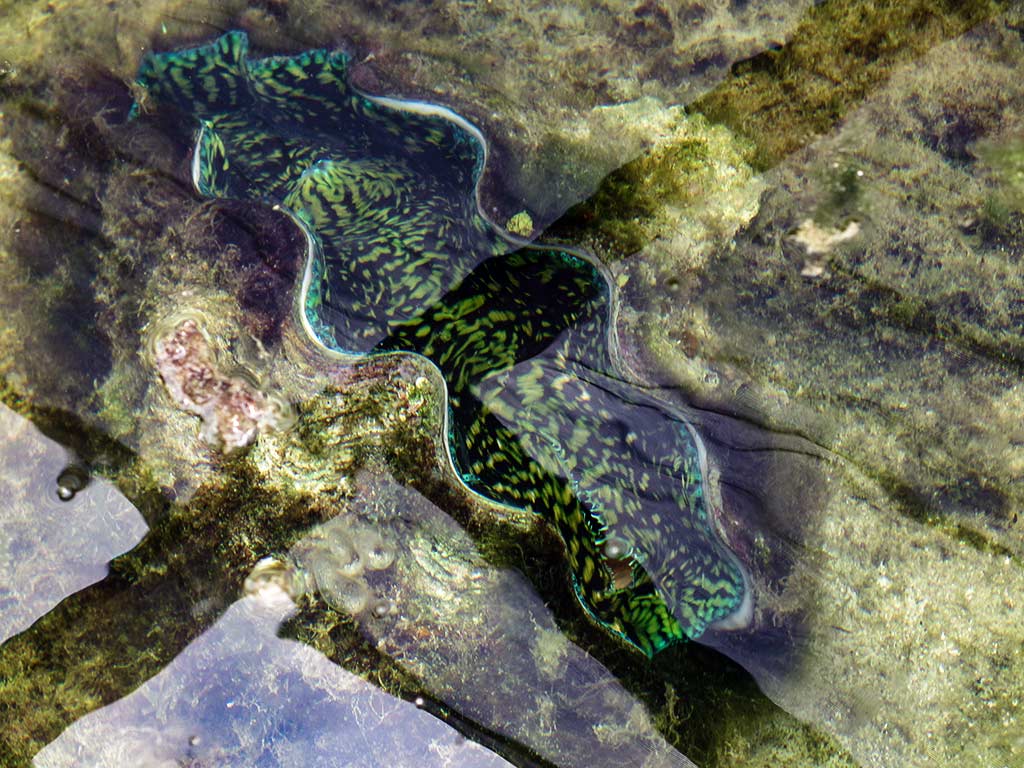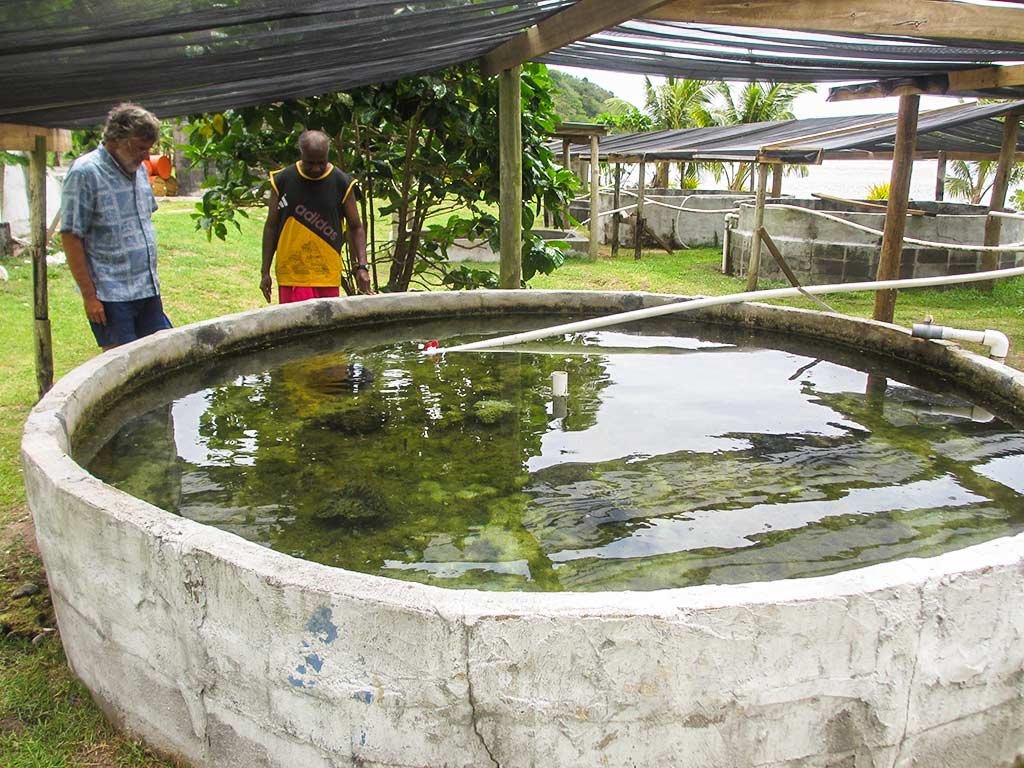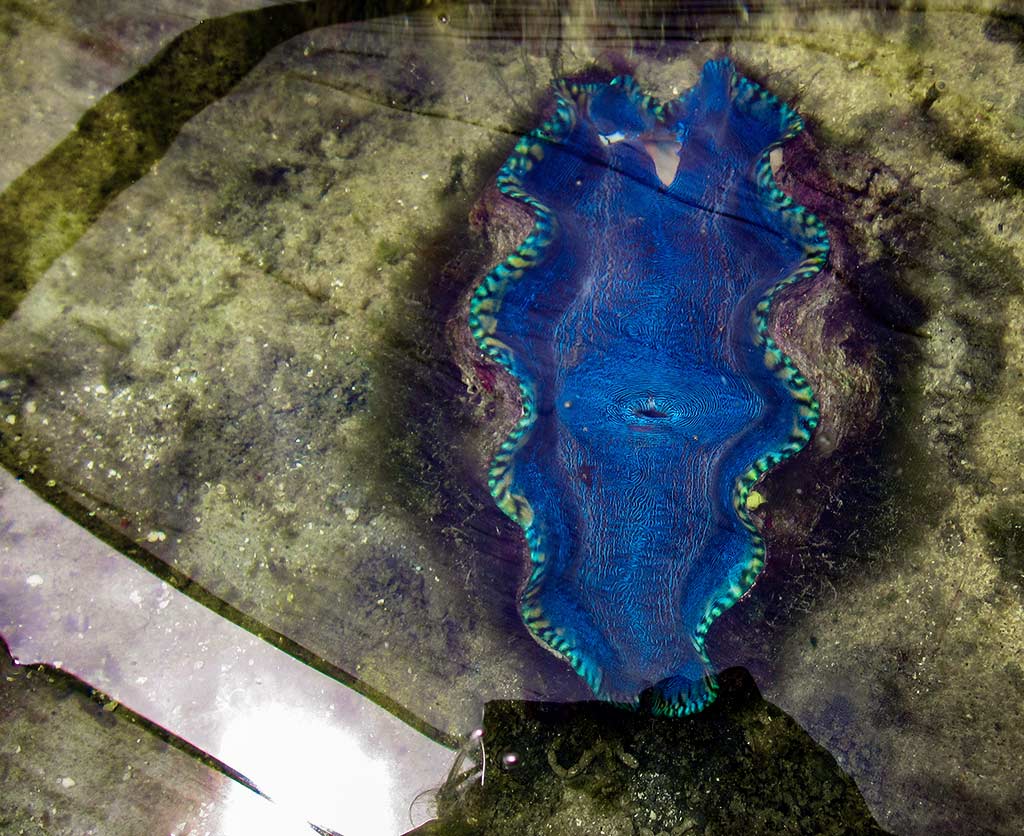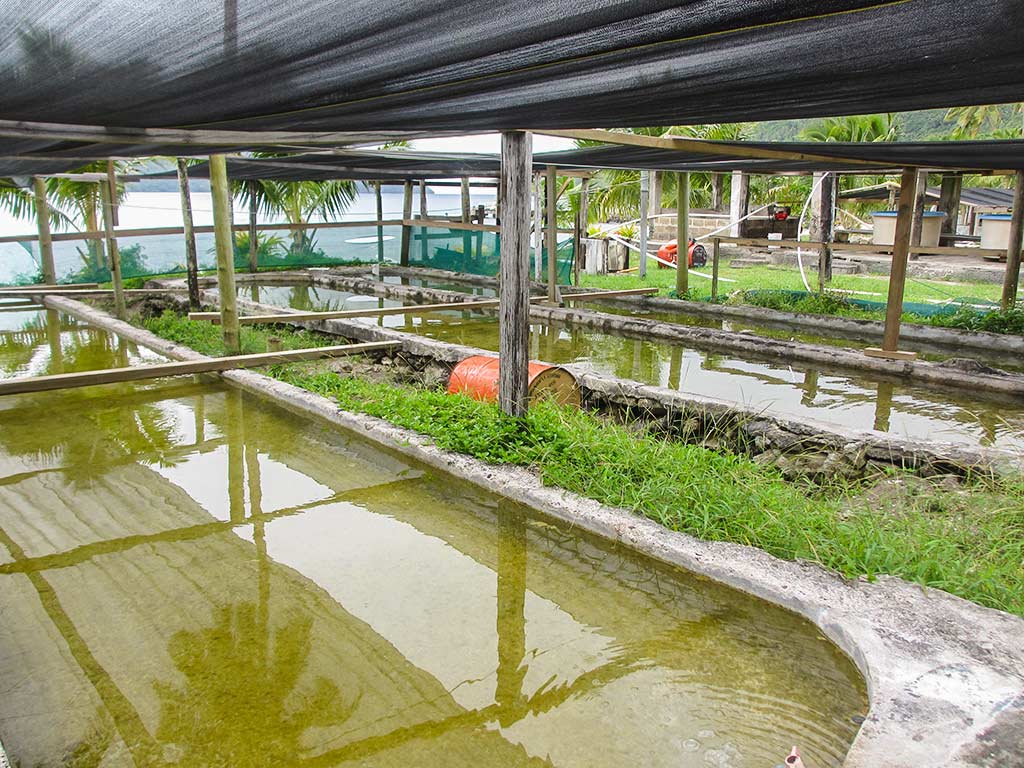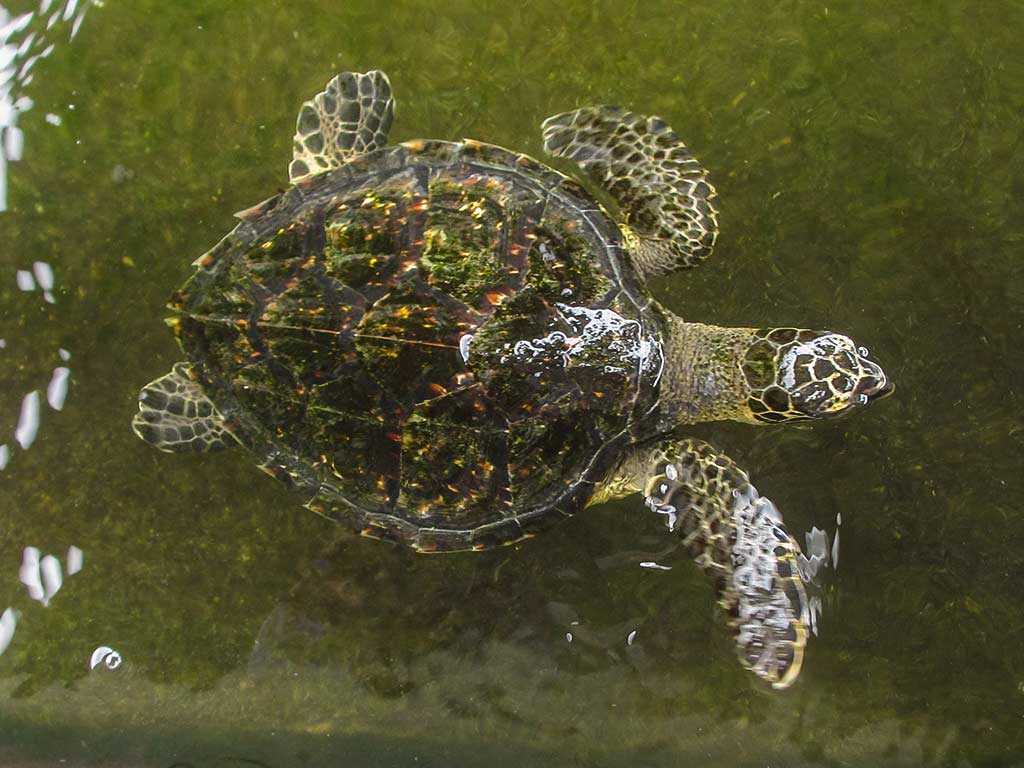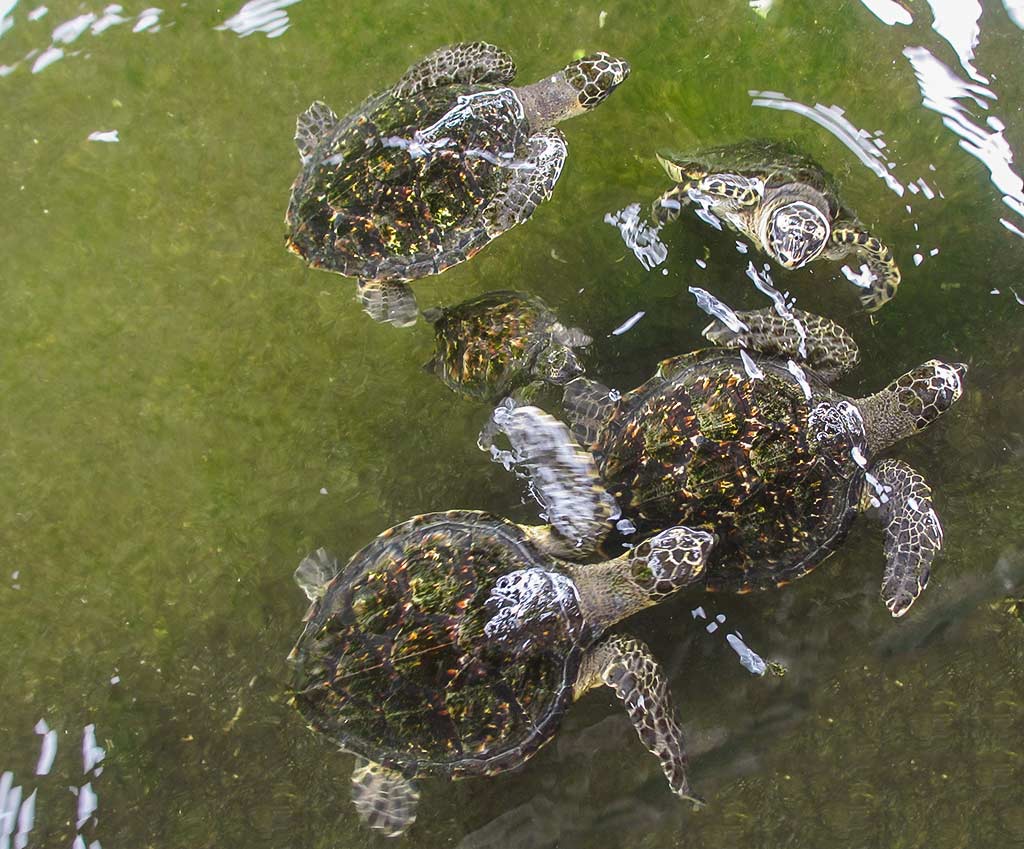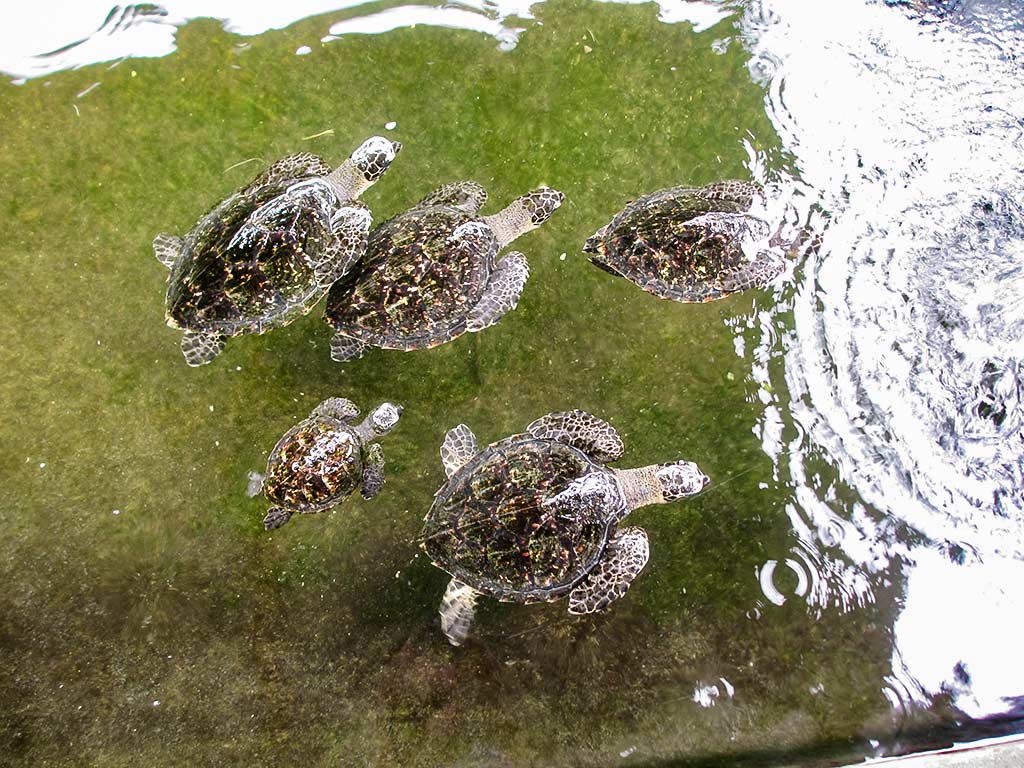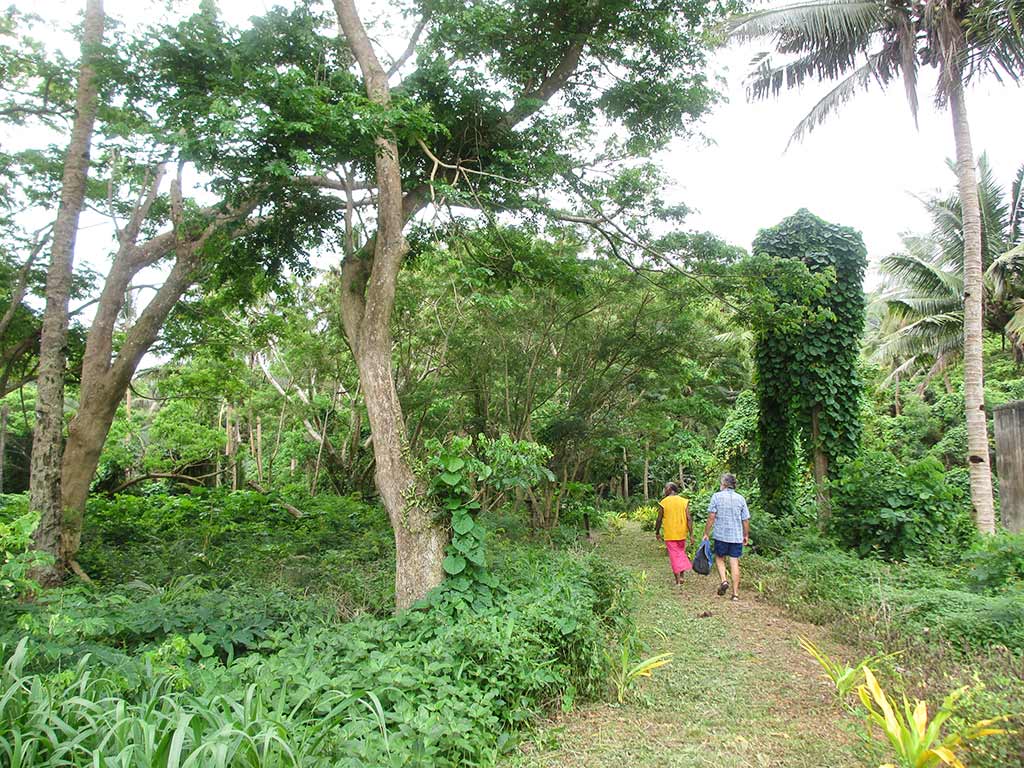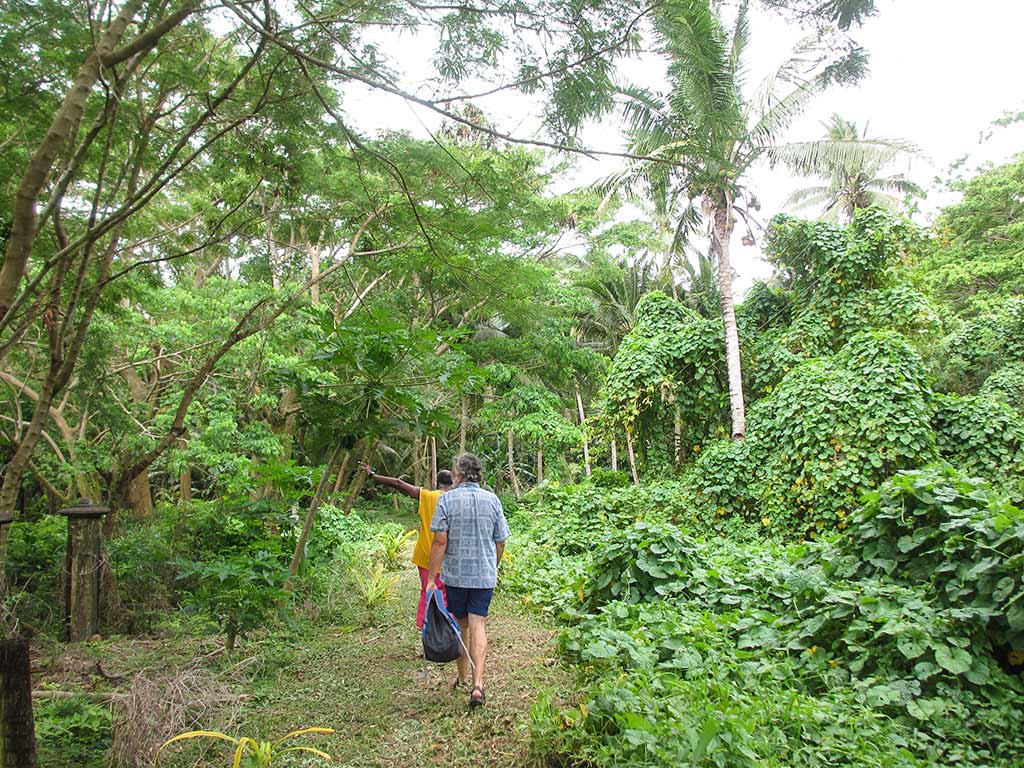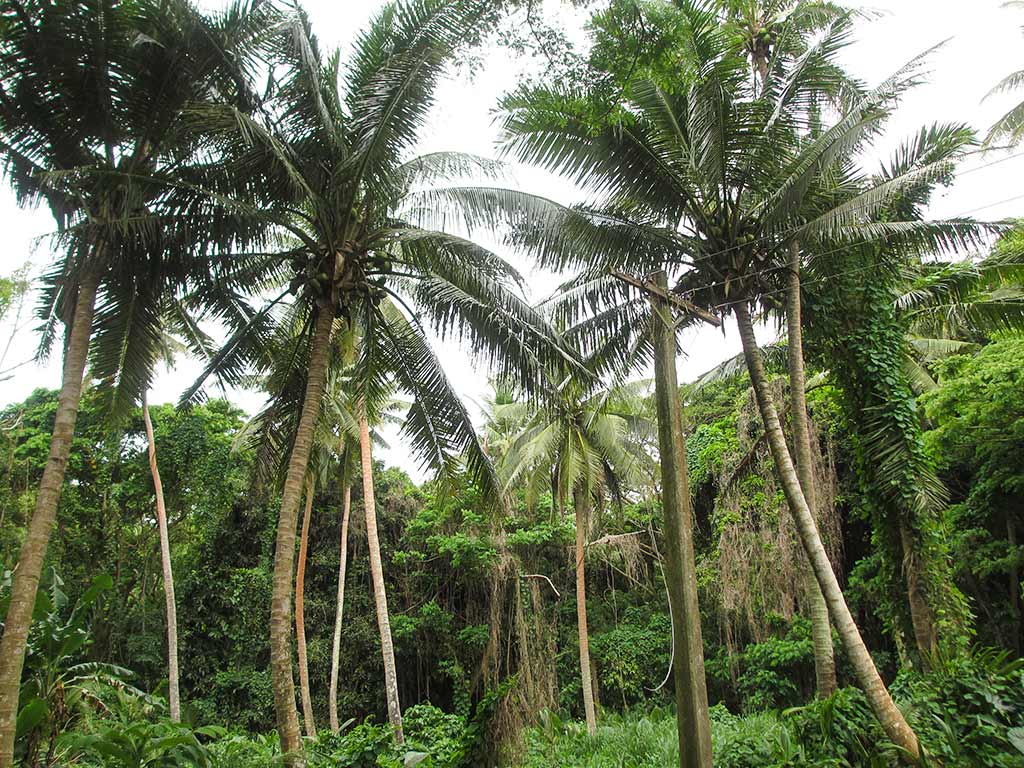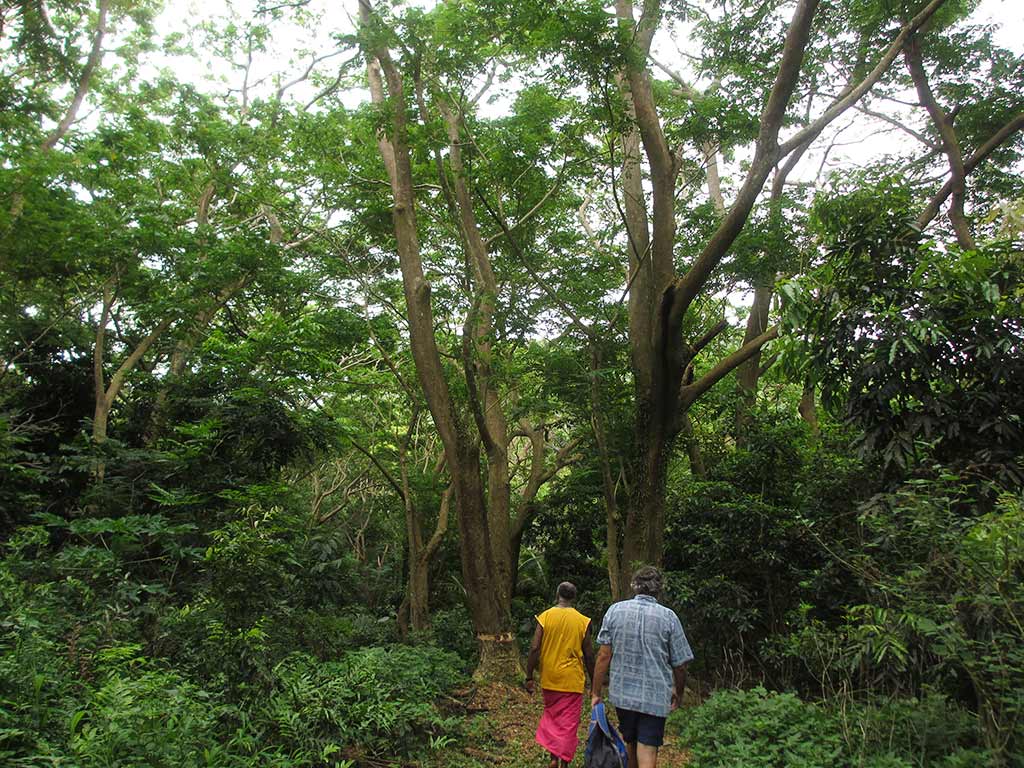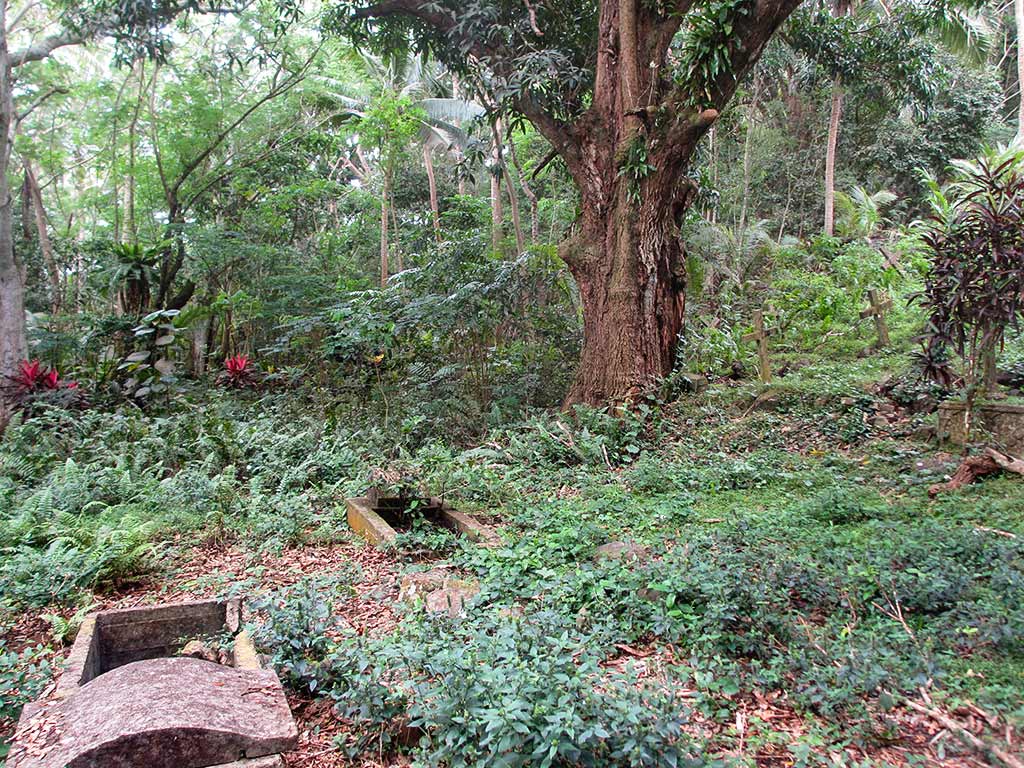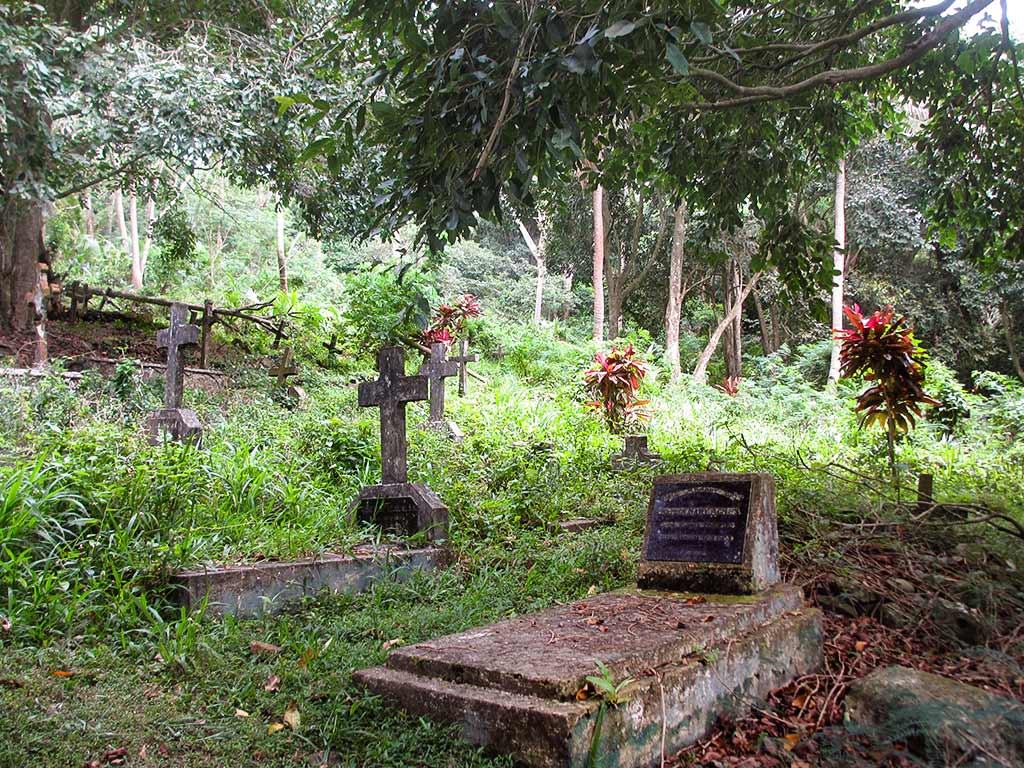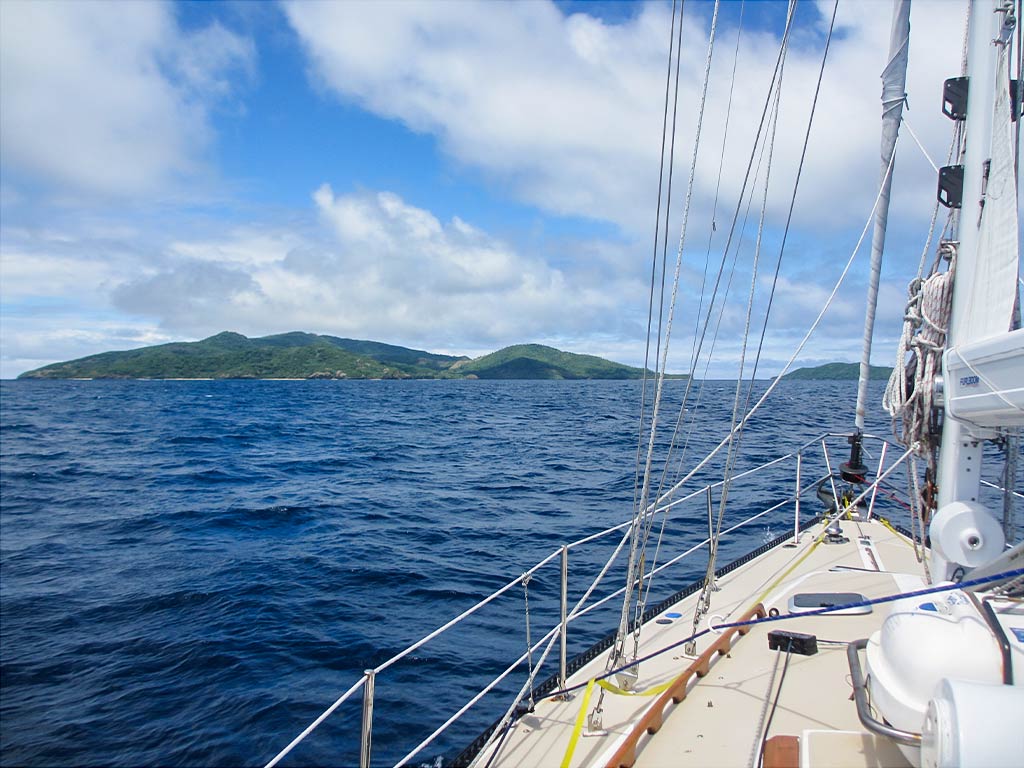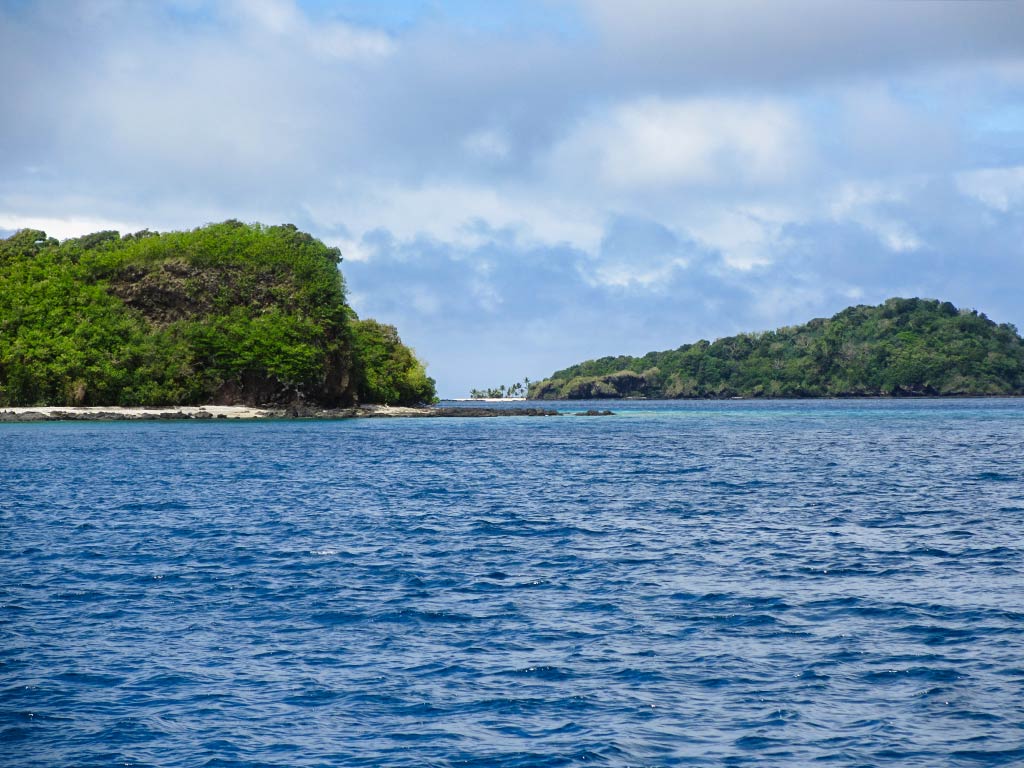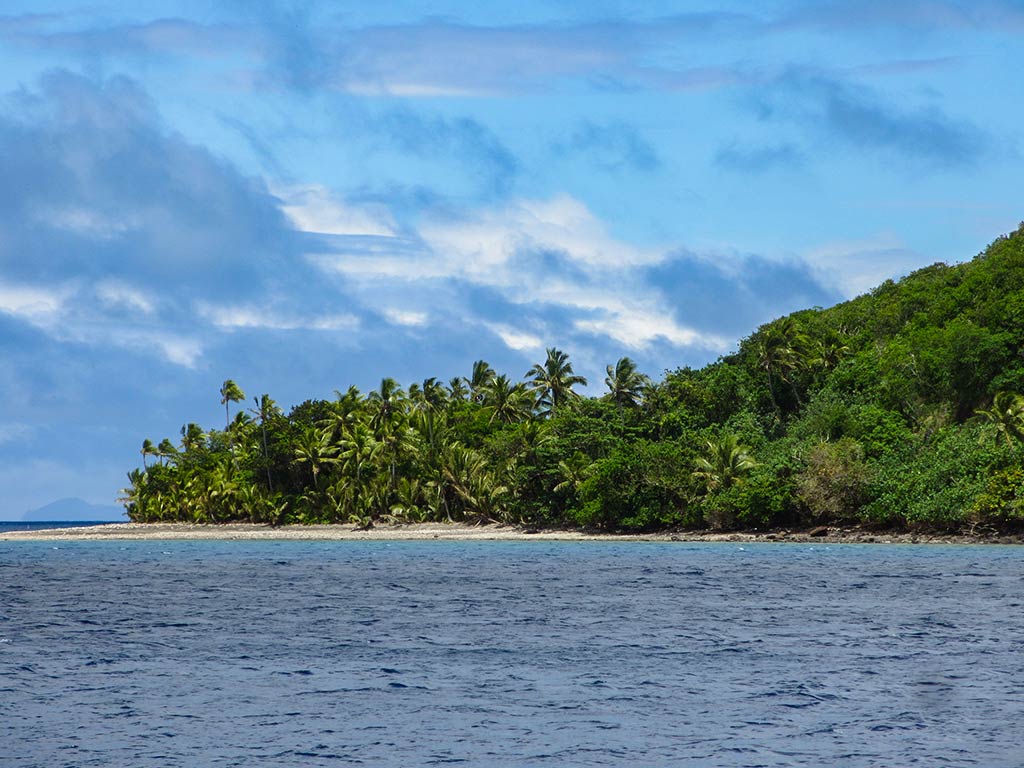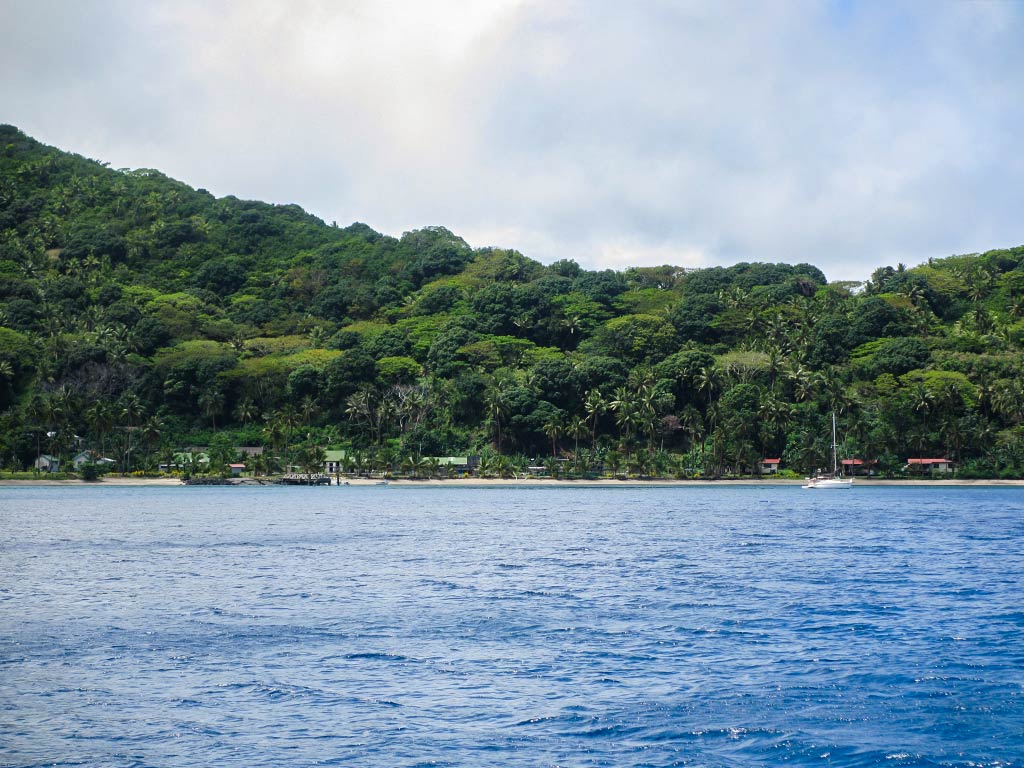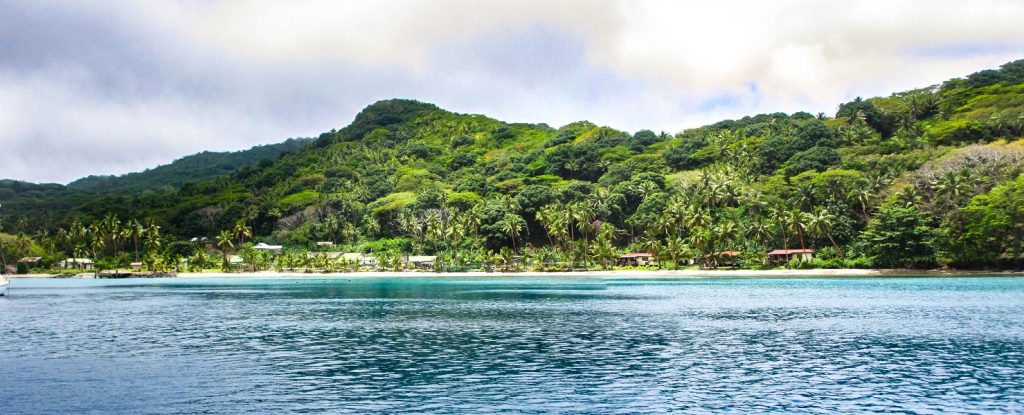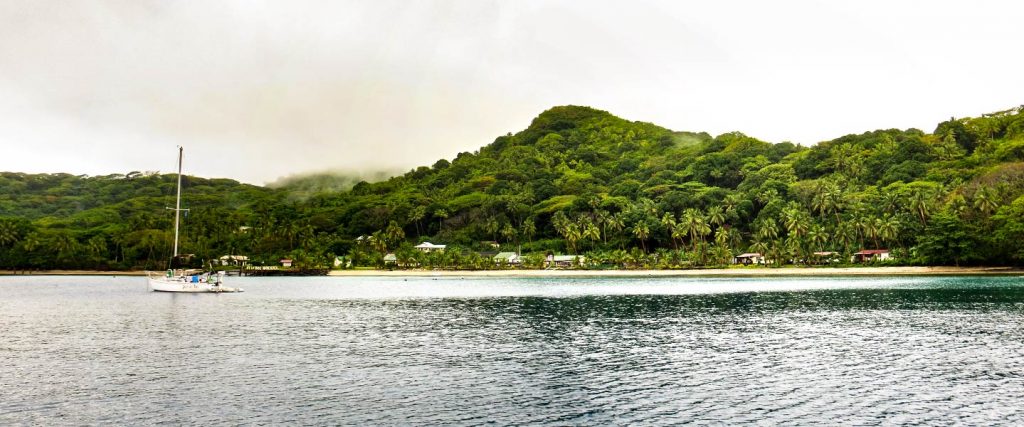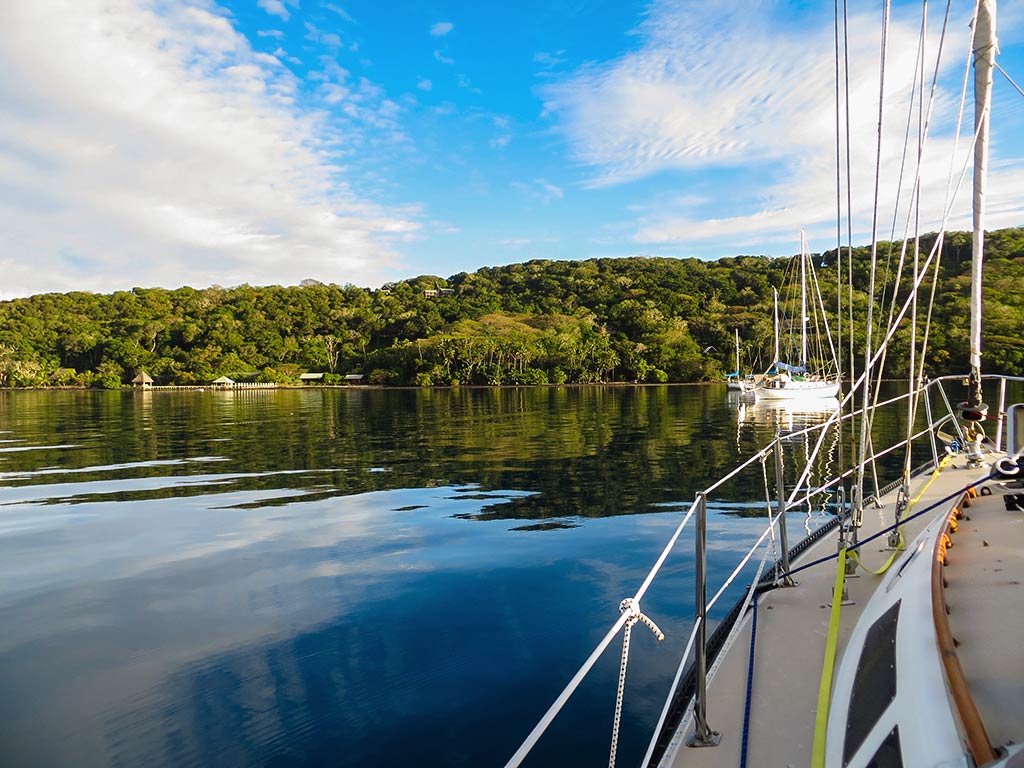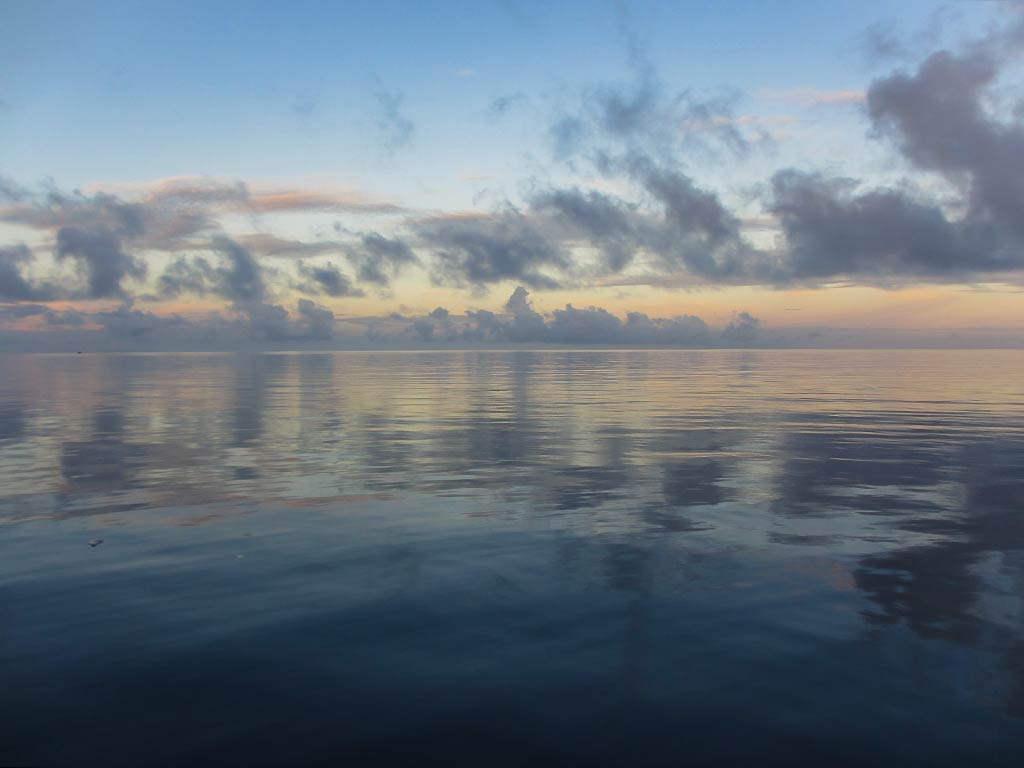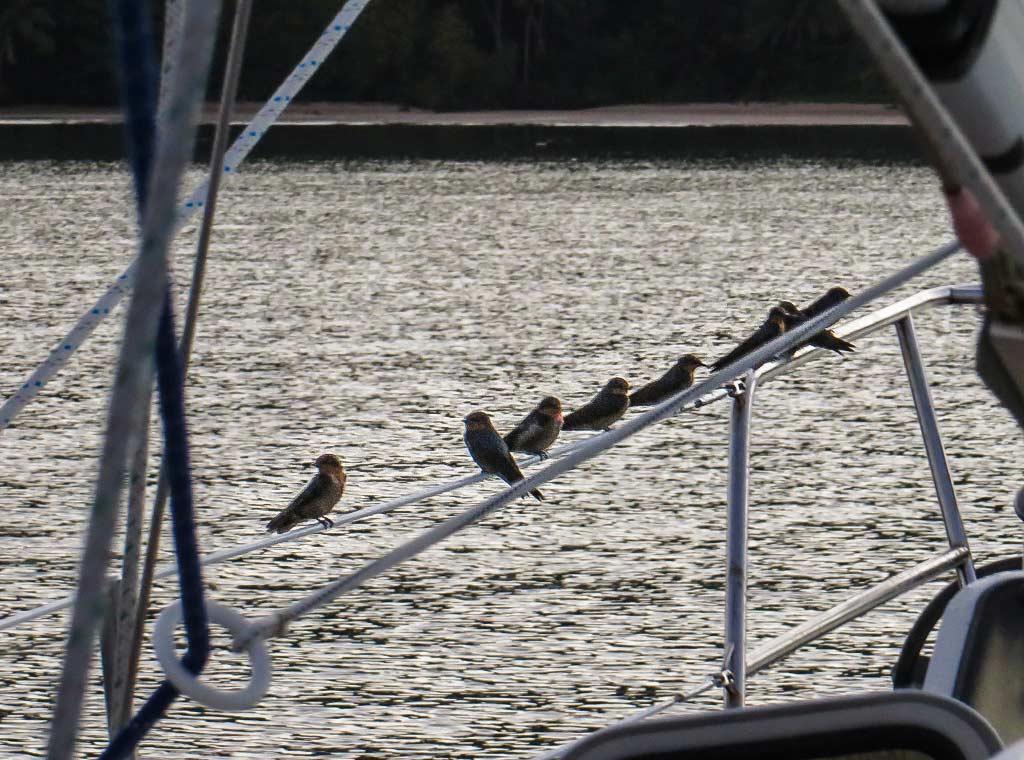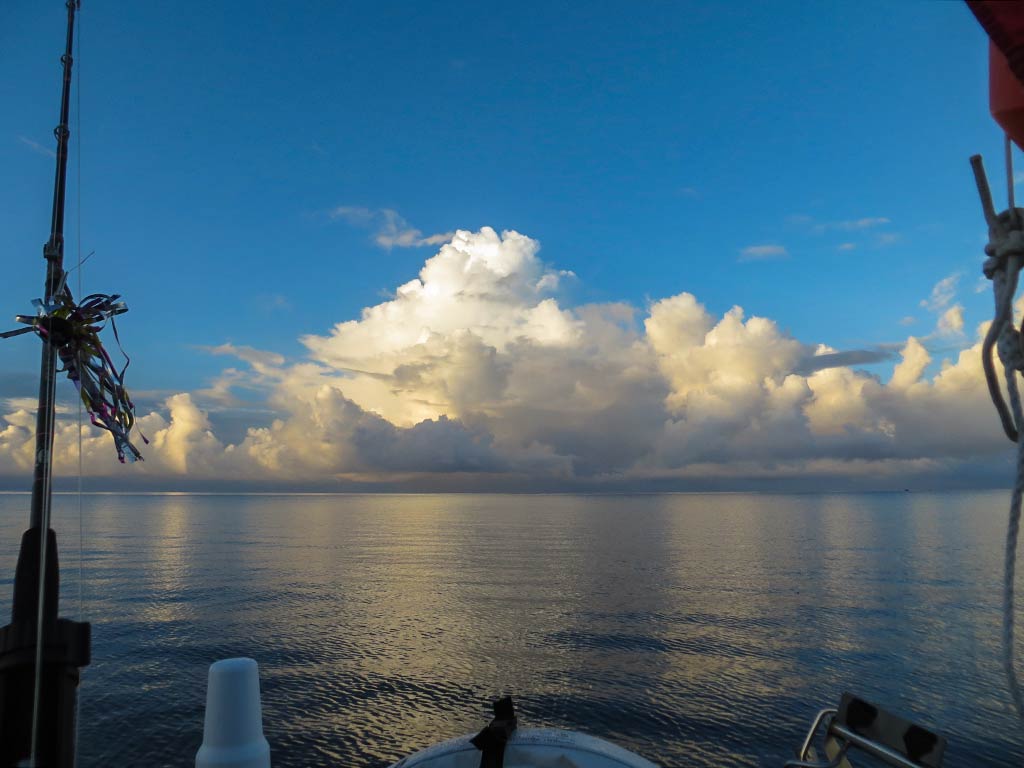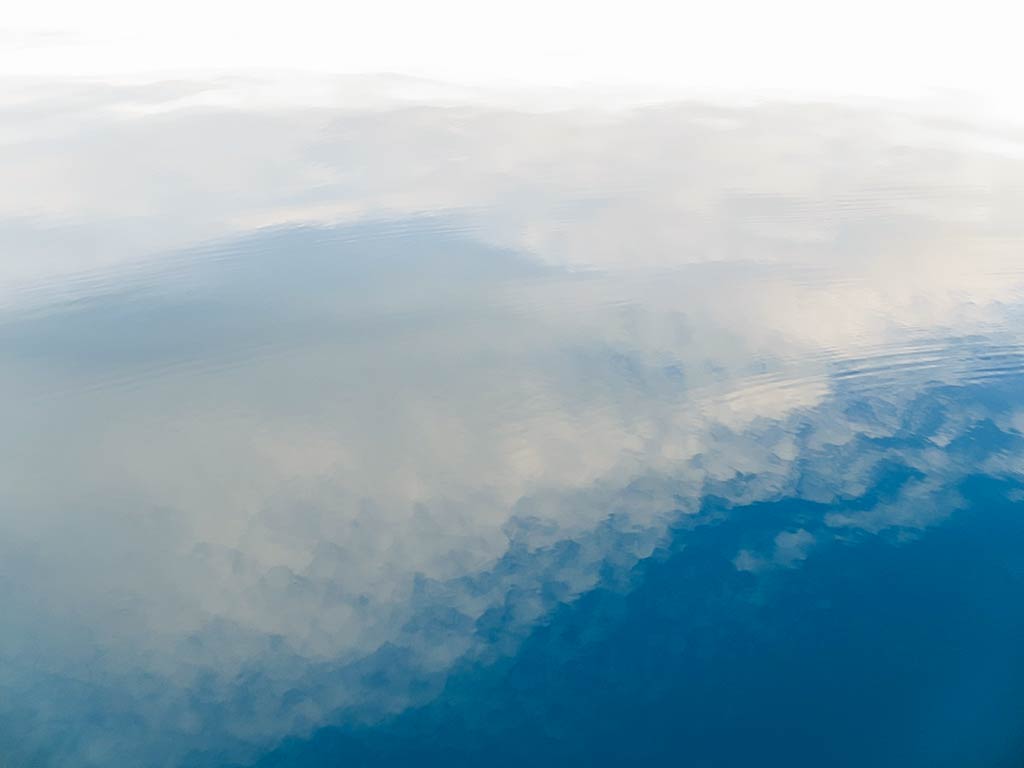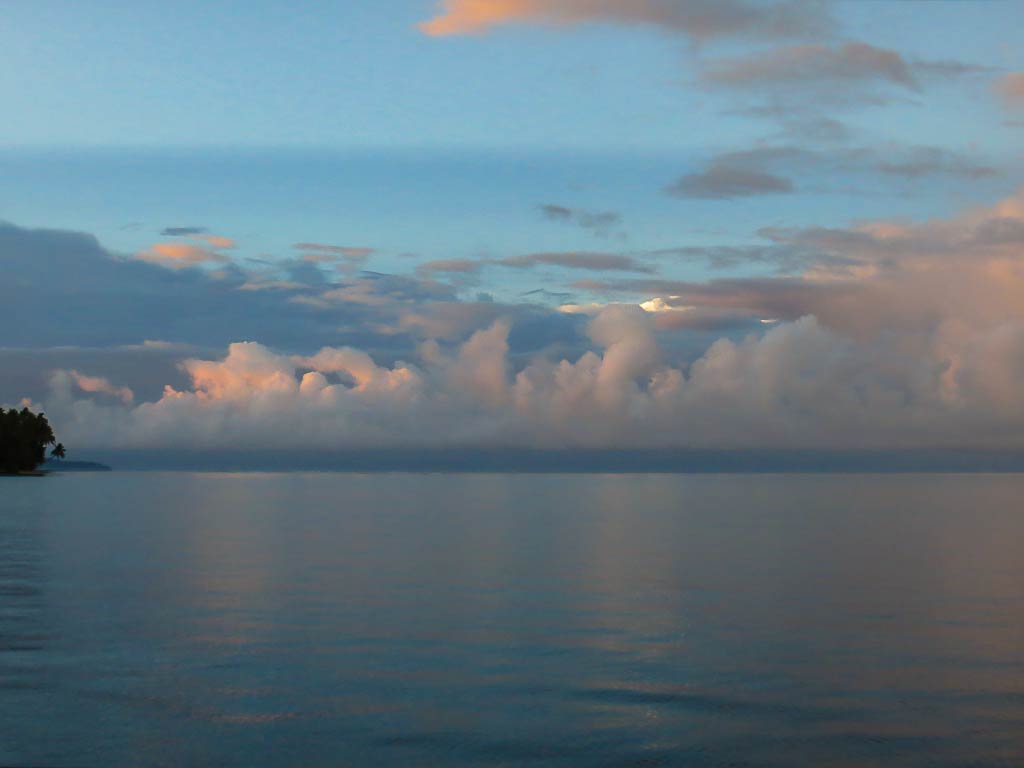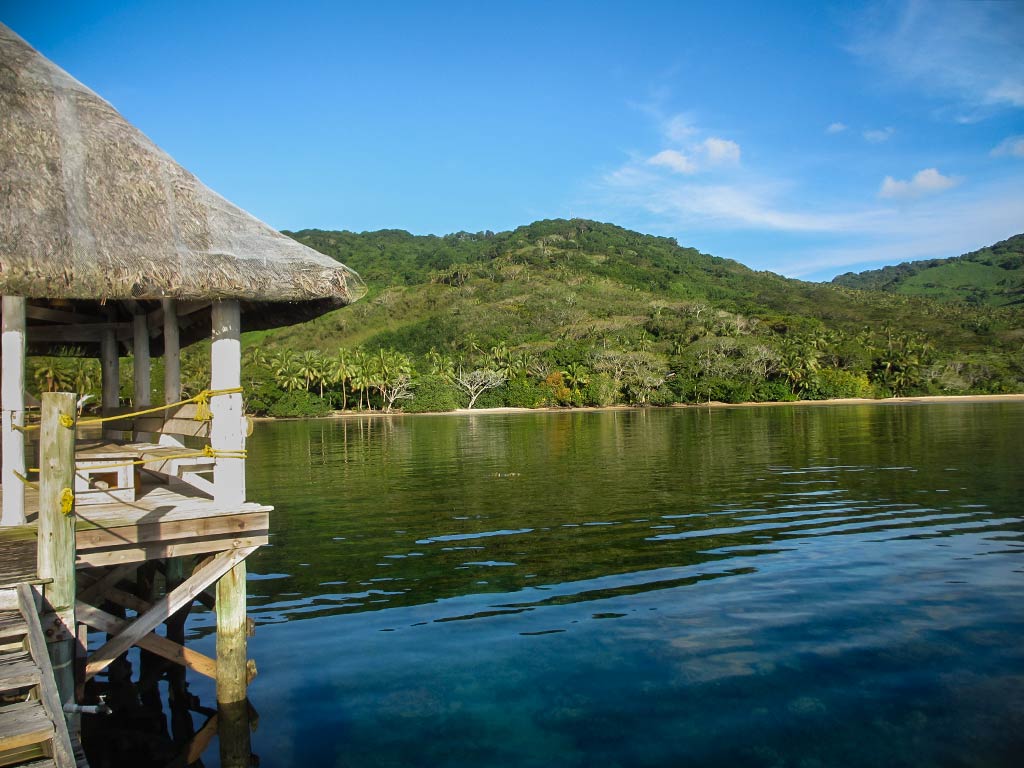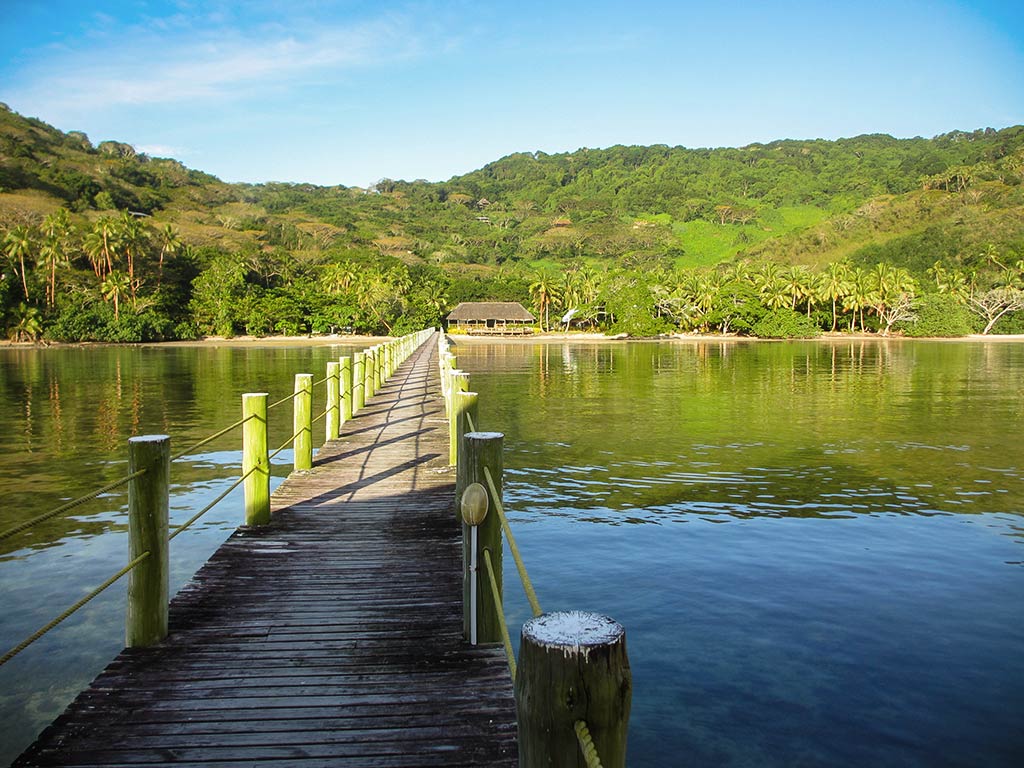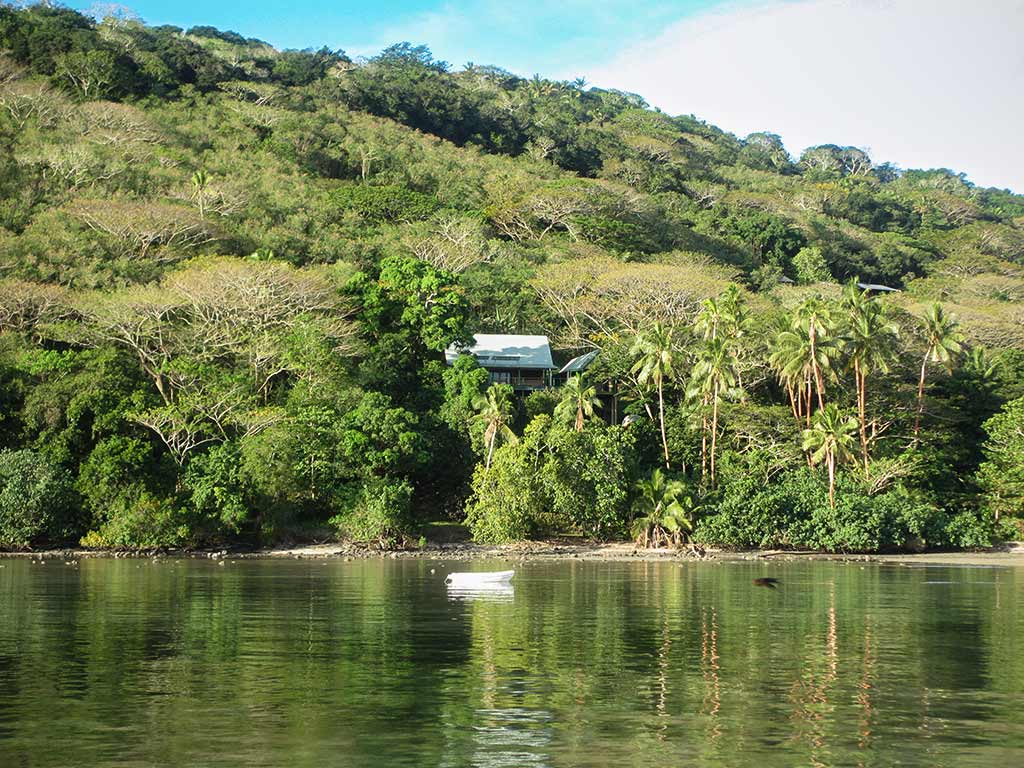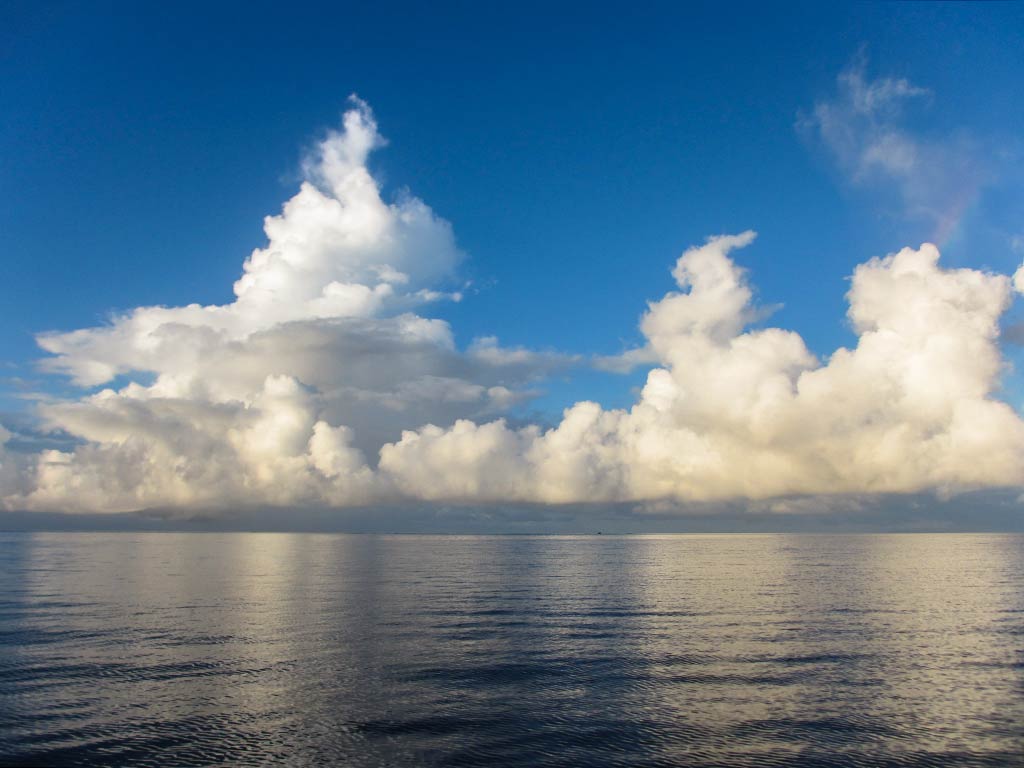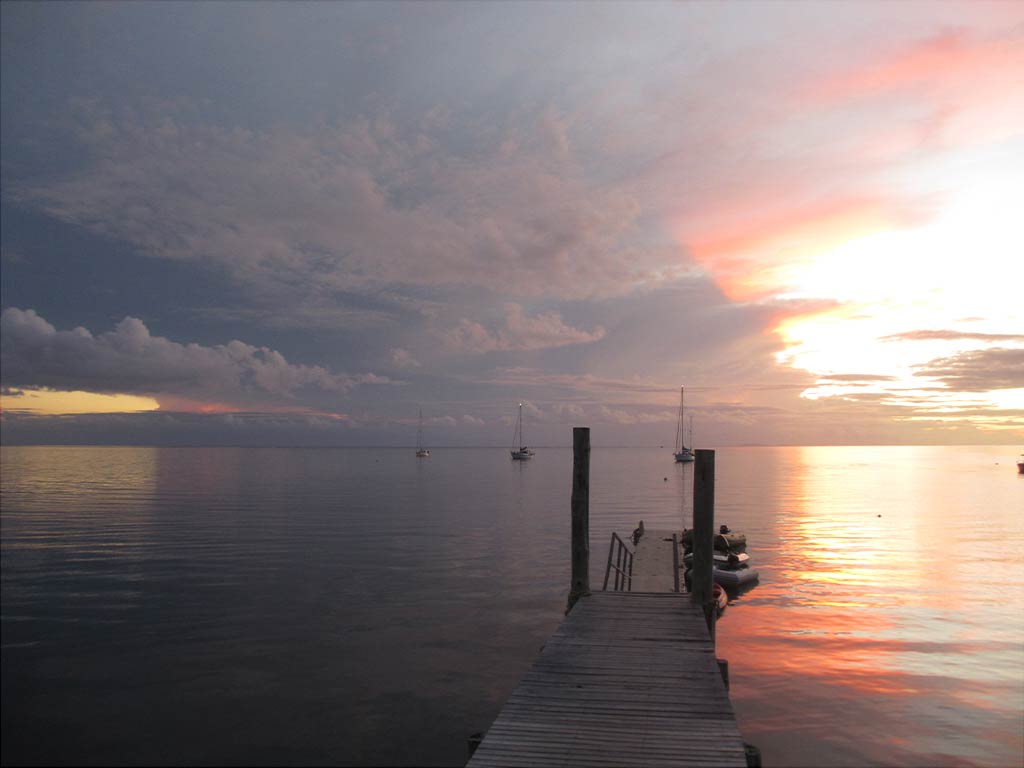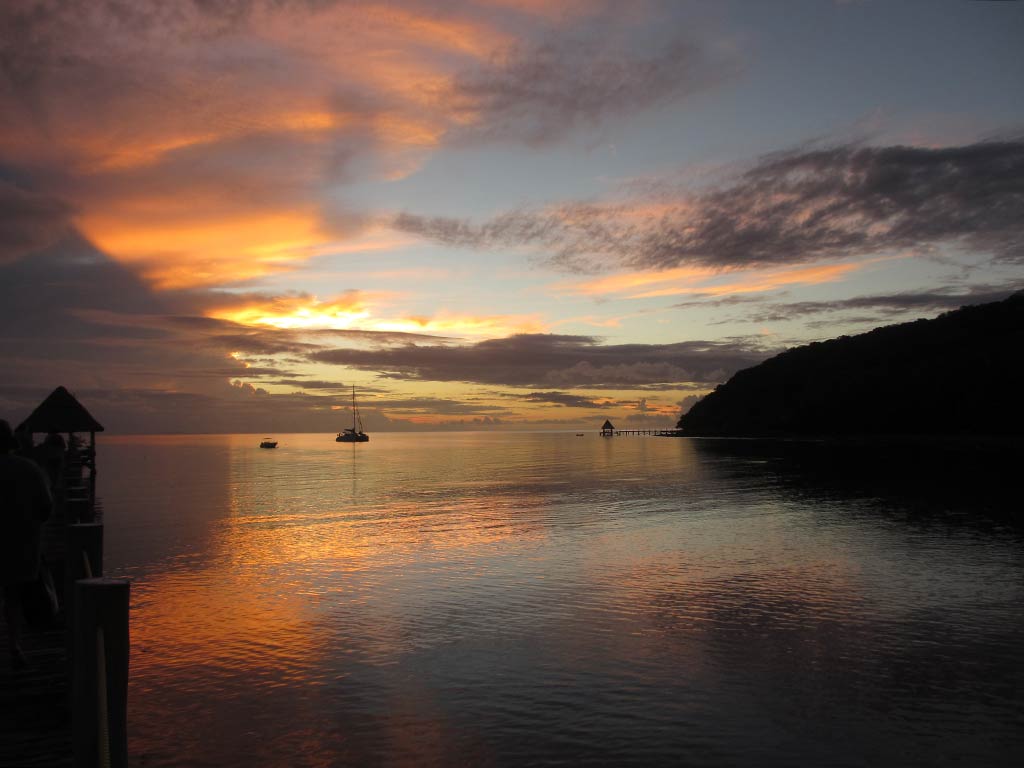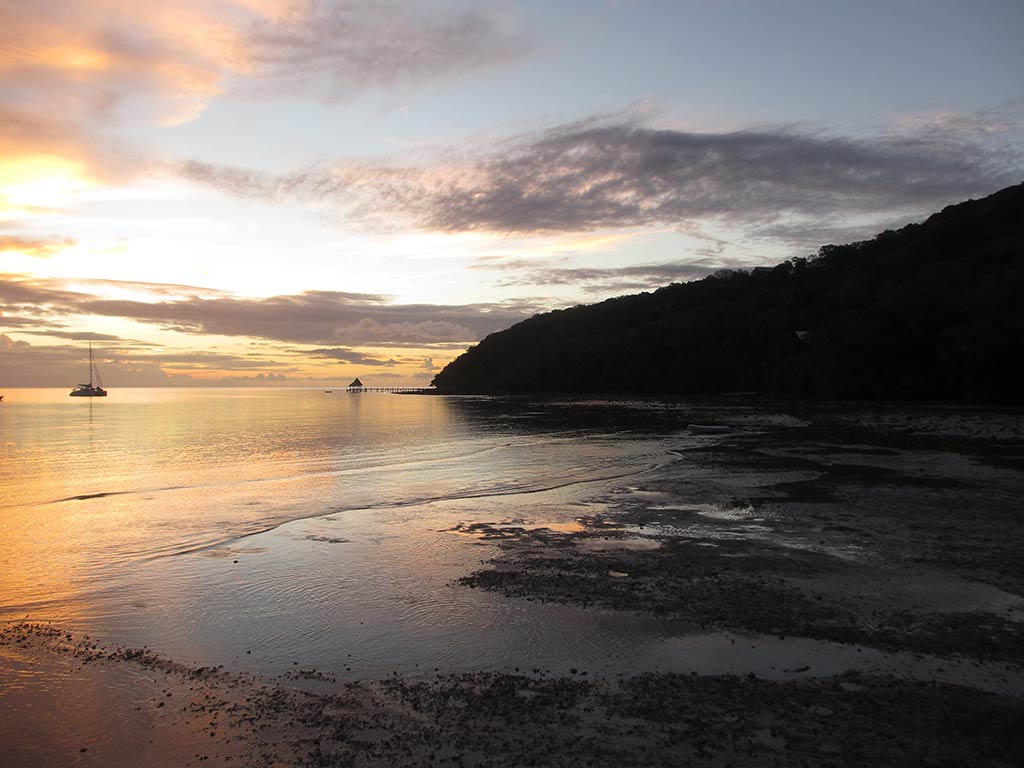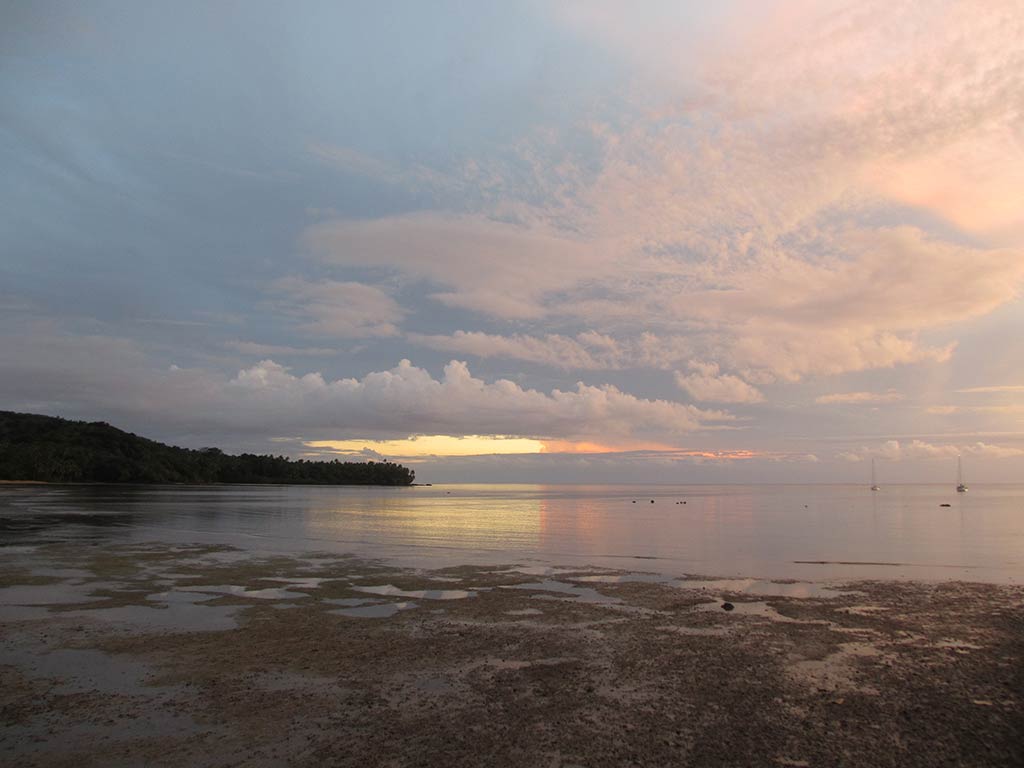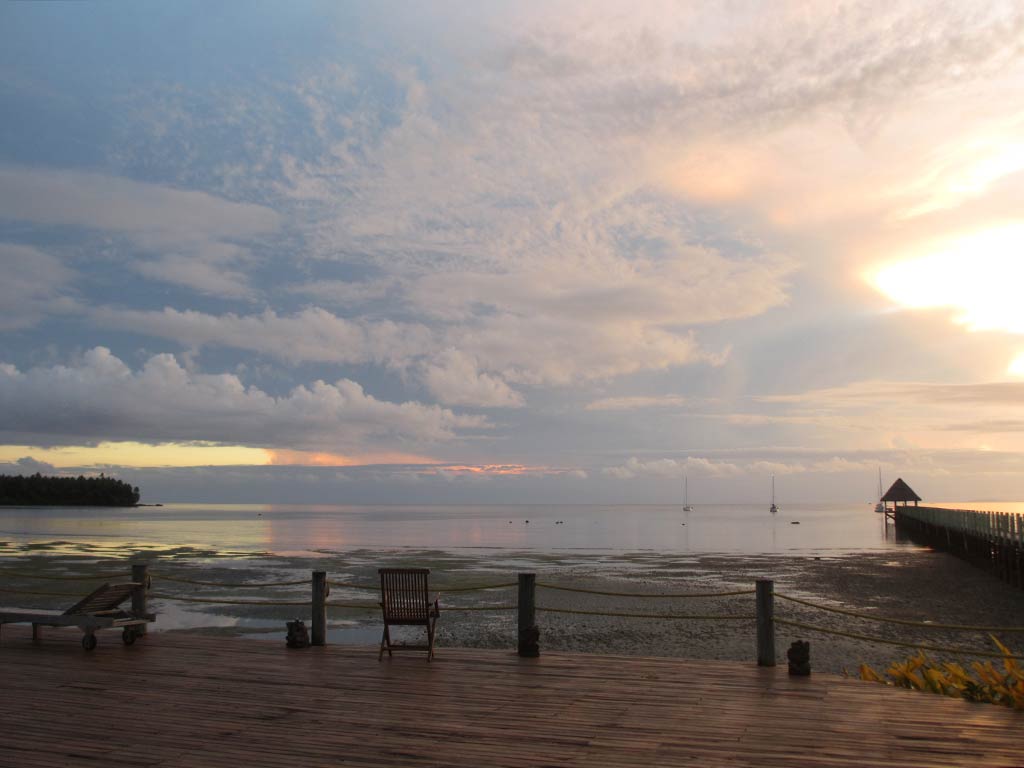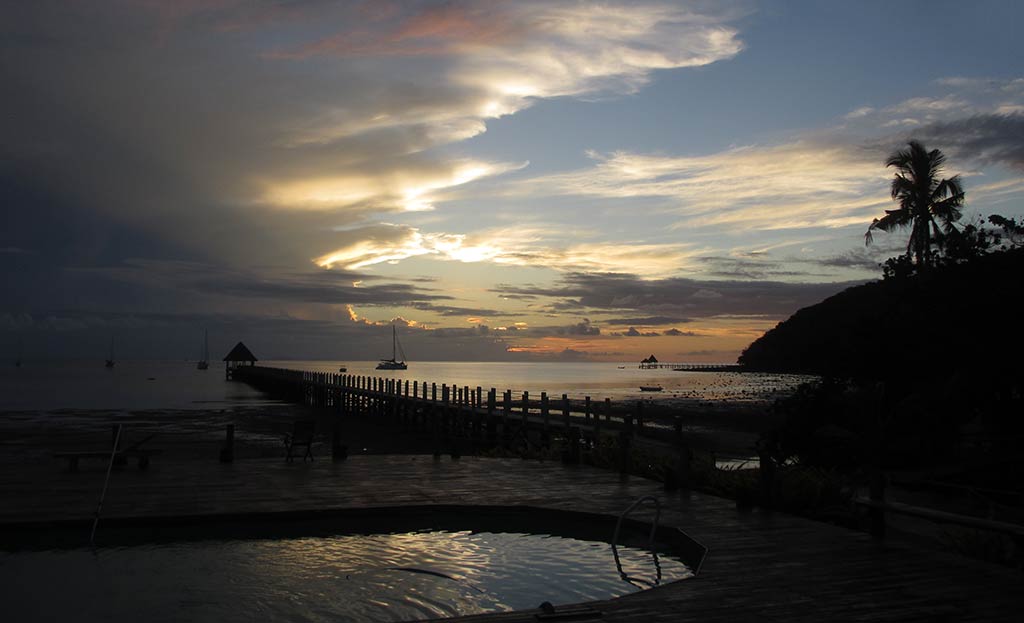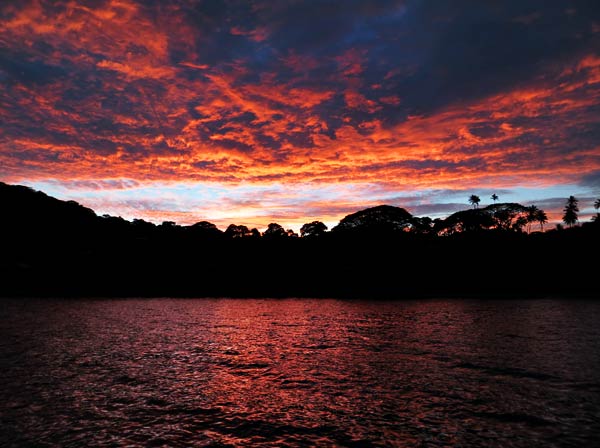October 30, 2013
This day our plan was to snorkel with the clams. It had been cloudy all morning but when it cleared some, we headed out with our underwater camera. Rich suggested we start with the biggest clams by the pier, then swim out towards the black buoys where, en route, we should be able to spot more clams and perhaps some old hospital bed frames (remnants of the leper colony).
So we went over to the pier, tied to the ladder, and jumped in. The clams weren’t very far down, maybe 8 feet, and they were huge. I thought calms only grew that large in the movies! And it wasn’t just their size that was impressive. They had different styles of mantle (the fleshy body visible as the clam’s “lips”), some of them brown with blue spots, some more brownish, and one that we’d seen ashore earlier that was bright indigo blue. They had two siphons, one to intake and one to expel water. They were stunning! There were about five by the pier, and I dove down next to them for scale for our photos.
Rich wrote a great blog post about snorkeling with the clams called Clammin’ Up.
After the pier, we swam out towards the black buoys and spotted an area that, with the color of the water and the giant clams looking like pods, could have doubled for the pool in the movie, Cocoon. We snorkeled among those before heading on. We saw bombies with impressive fish life, some nice coral, more clams, plus the old hospital bed frames scattered about a sandy bottom. Also, there were strange old metal frames for planting clams and some oyster floats. With this strange hodgepodge of stuff, this was a weird and wonderful place. Below, a small photo gallery of underwater Delice Bay.
By the time we got back to the boat the sky had clouded up again. Soon, it started to rain, and for the rest of the day we had showers off and on. As the evening went on the rain got heavier. When we started to see flashes of light outside, we unplugged our electronics, then watched and listened. The thunder sounded distant, but there sure was a lot of lightening.
Overnight we had the heaviest and most consistent rain that we’d seen in Fiji. With all the rain, the lightening, and getting up and down to close hatches, we both ended up awake at midnight. Rich suggested something really weird: that we get up, make popcorn and watch Star Trek. Well, it was a weird night in a strange surreal place, so why not eat popcorn and watch Star Trek and have beer at midnight? As long as we didn’t hear thunder we felt OK plugging our electronics back in.
And so we did just that, making a nice moment out of having fitful sleep. By the end of the show we both conked out and slept through the rainy night. We hoped to leave the next day but not if the weather was going to be like this. –Cyndi.

